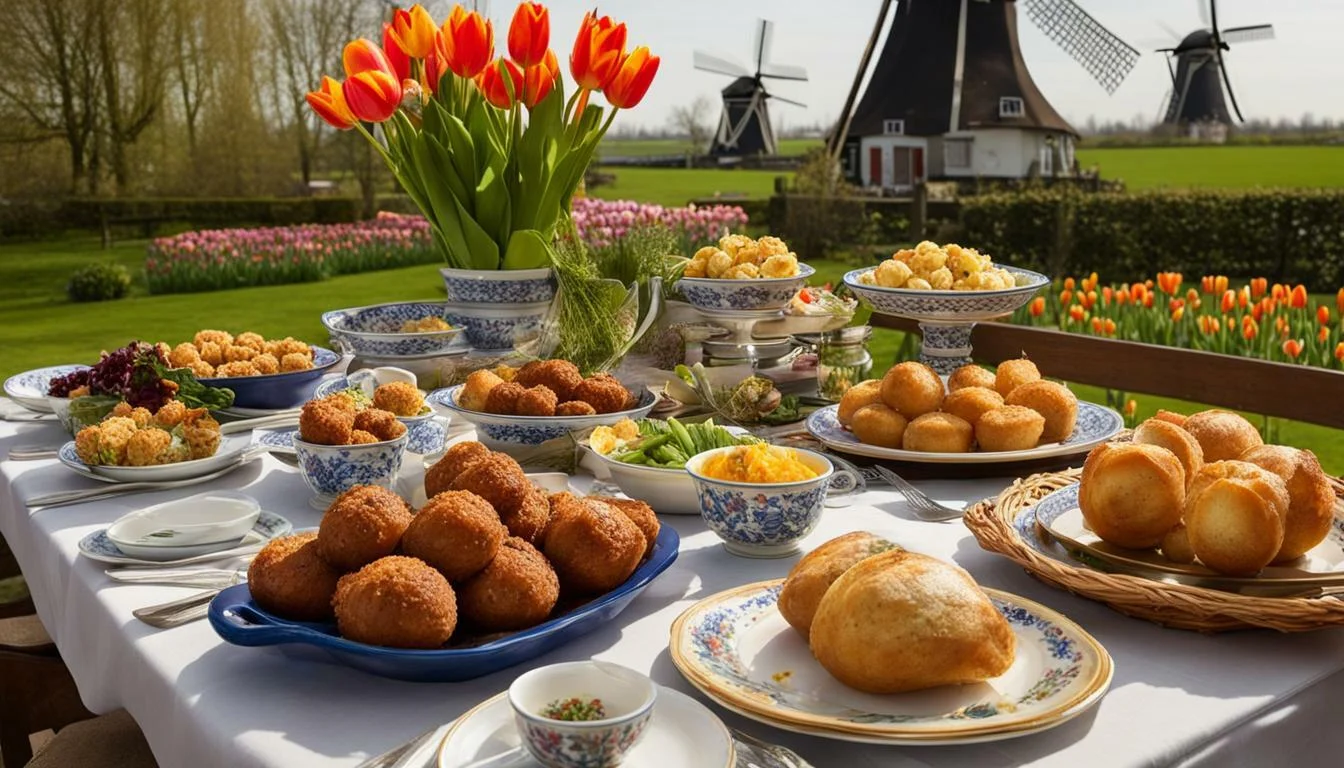Take Me to the Recipes
Forget the stereotypical clogs and cheese! The Netherlands offers a vibrant culinary adventure waiting to tantalize your taste buds. From the salty tang of North Sea mussels to the comforting warmth of a “stamppot” stew, Dutch cuisine is a tapestry woven with history, flavors, and surprising delights.
Imagine:
- Sinking your teeth into a freshly caught herring, a Dutch delicacy enjoyed with gusto (and maybe a little theatrics!).
- Indulging in a plate of “poffertjes,” miniature pancakes drizzled with melted butter and dusted with powdered sugar.
- Savoring a creamy bowl of “snert” (pea soup), a hearty hug in a spoon on a chilly day.
- Discovering the unexpected spices in “gado-gado,” a salad celebrating the Dutch colonial connection with Indonesia.
But Dutch cuisine is more than just food. It’s a journey through time, reflecting the country’s maritime heritage, trading prowess, and agricultural abundance. Each bite whispers tales of fishermen braving the North Sea, spice merchants seeking exotic flavors, and resourceful farmers coaxing bounty from the fertile land.
In this article, we’ll be your culinary guide
- Unraveling the history that shaped Dutch flavors.
- Exploring iconic dishes that will make your mouth water.
- Demystifying strange-sounding ingredients and traditions.
- Sharing insider tips for experiencing Dutch cuisine like a local.
So, are you ready to embark on a delicious adventure beyond the stereotypes? Grab your metaphorical fork and spoon, and let’s dive into the captivating world of Dutch cuisine!
Take Me to the Recipes
Dutch Cuisine – Key Takeaways
- Experience the unique flavors and techniques of Dutch cuisine
- Learn about the importance of Dutch food culture and culinary traditions
- Discover traditional Dutch dishes and popular recipes
- Explore the cooking techniques that contribute to the delicious flavors of Dutch cuisine
- Embrace the essence of authentic Dutch cuisine and its connection to Dutch identity.
Where is the Netherlands?

The Netherlands is a small country sandwiched between Belgium and Germany in Western Europe. The North Sea, located to the north and west of the Netherlands, is continually battering the land.


Index to the Contents
- Take Me to the Recipes
- Other Articles
- Interesting Facts About the Netherlands
- A Culinary Journey Through Time: Dutch Cuisine & Its Historical Tapestry
- What impact has the Climate and Geography had on Dutch Cuisine?
- Understanding the Essence of Dutch Cuisine
- Dutch Culinary Traditions
- Exploring the Netherlands’ Ingredients: The Flavors of the Netherlands
- Exploring Dutch Cuisine Techniques
- Embracing Authentic Dutch Cuisine
- Dutch Cuisine: A Taste of Heritage
- The Legacy of Dutch Cuisine
- Dutch Cuisine Specialties: Beyond the Basics
- How Healthy is Dutch Cuisine?
- Classic Dutch Dishes
- National Dutch Dish
- Amsterdam National Dish
- Dutch Recipes you can Try in Your Own Kitchen
- Conclusion
- FAQ’s
You may also Enjoy the Following Articles
- North and South American Cuisine – A Culinary Expedition
- European Cuisine: Savor the Continent’s Best Culinary Secrets!
- African Cuisine: Discover the Bold Flavors & Global Charm!
- Asian Cuisine Unlock its Secrets – Taste, Health & Global Influence!
- Oceania Cooking: A Culinary Journey Through the Pacific
Savor iconic Dutch Food – Click on each tantalizing picture to open up the Recipe


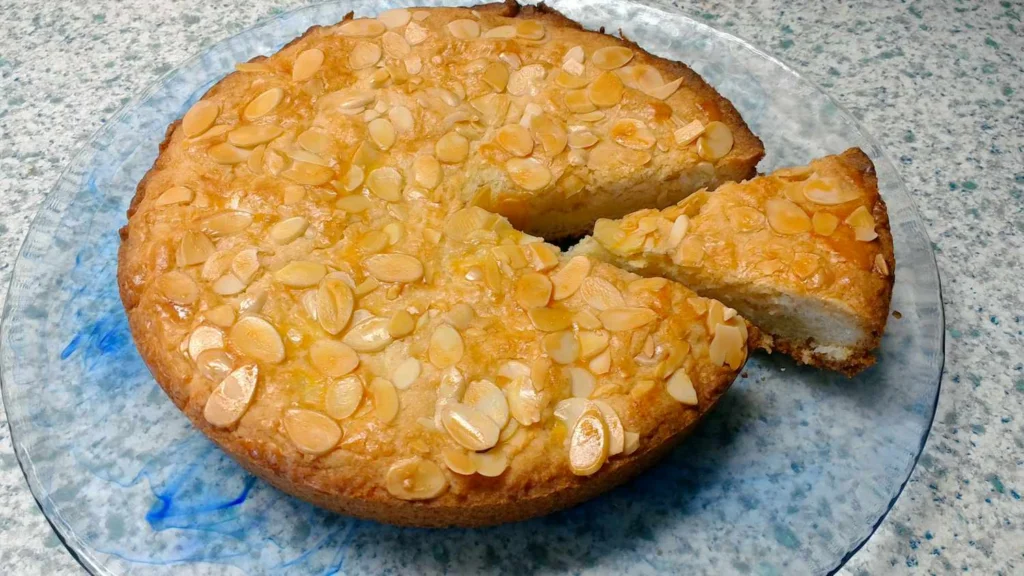


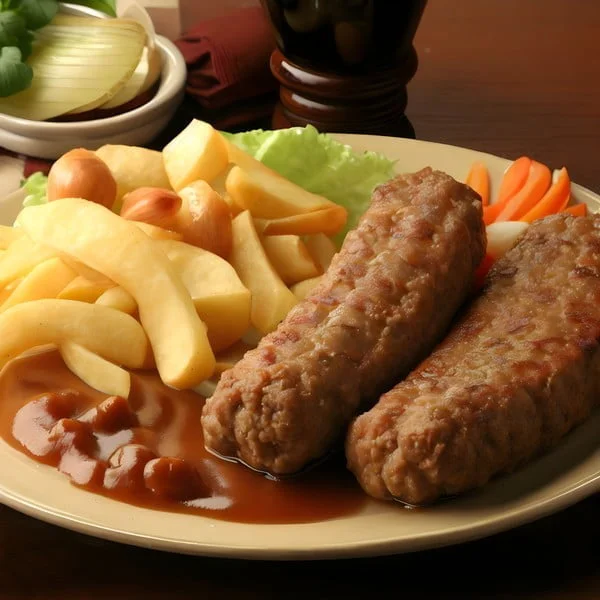
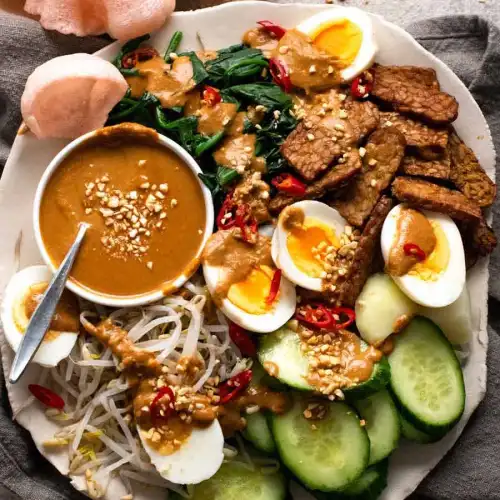
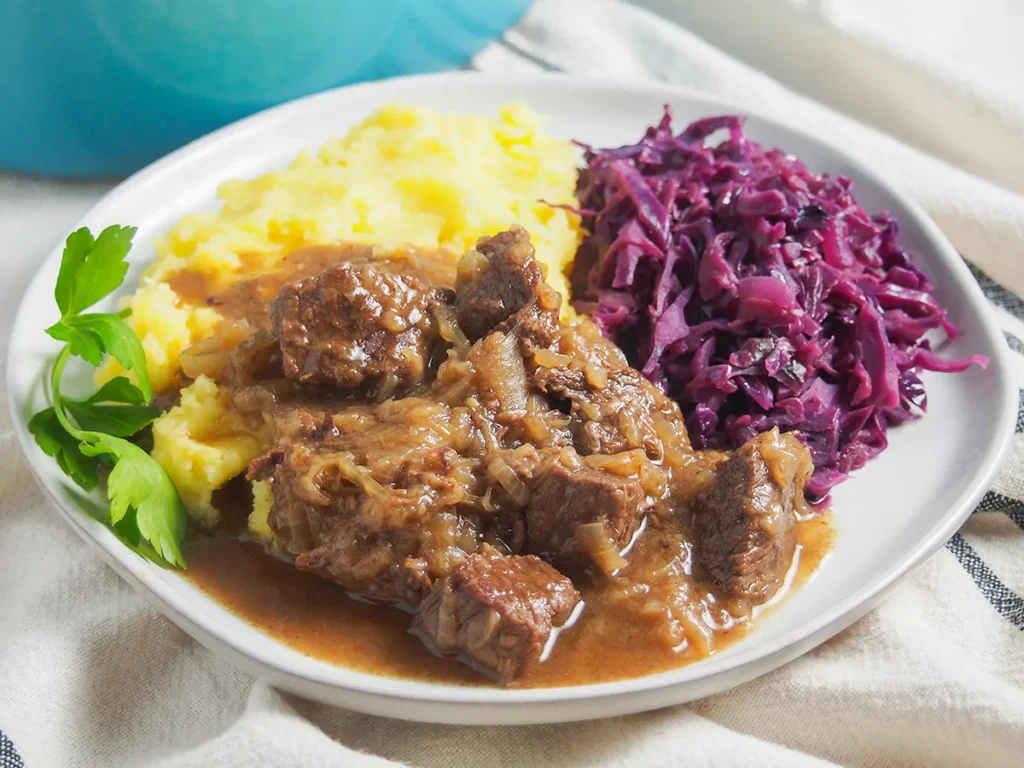
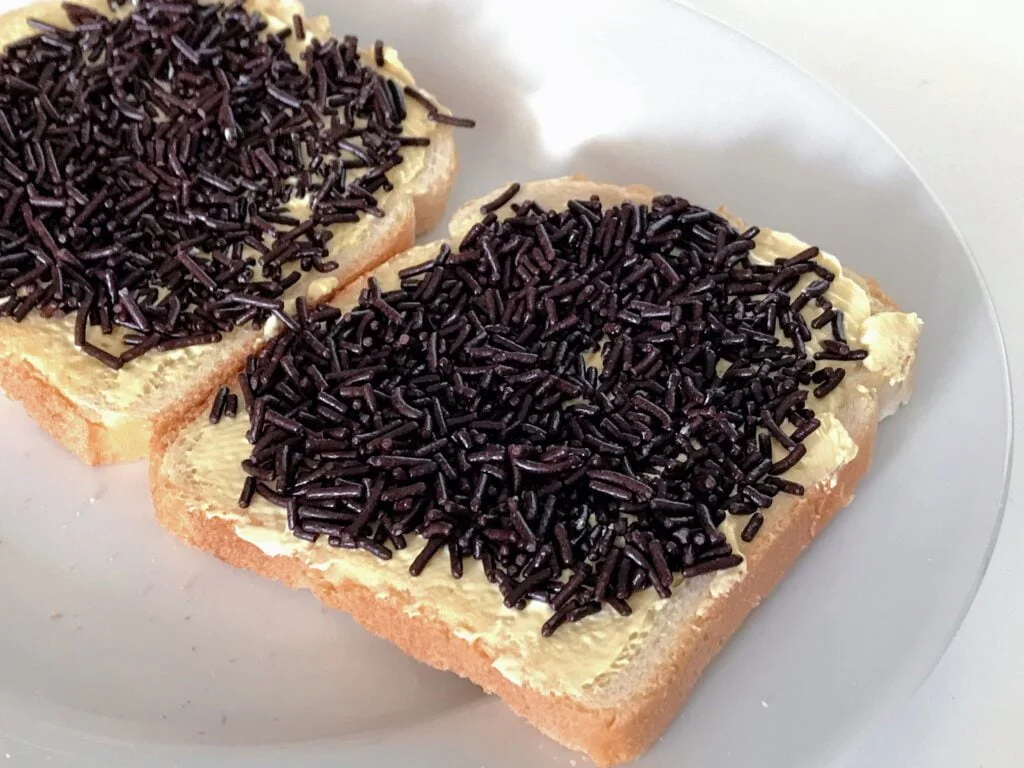


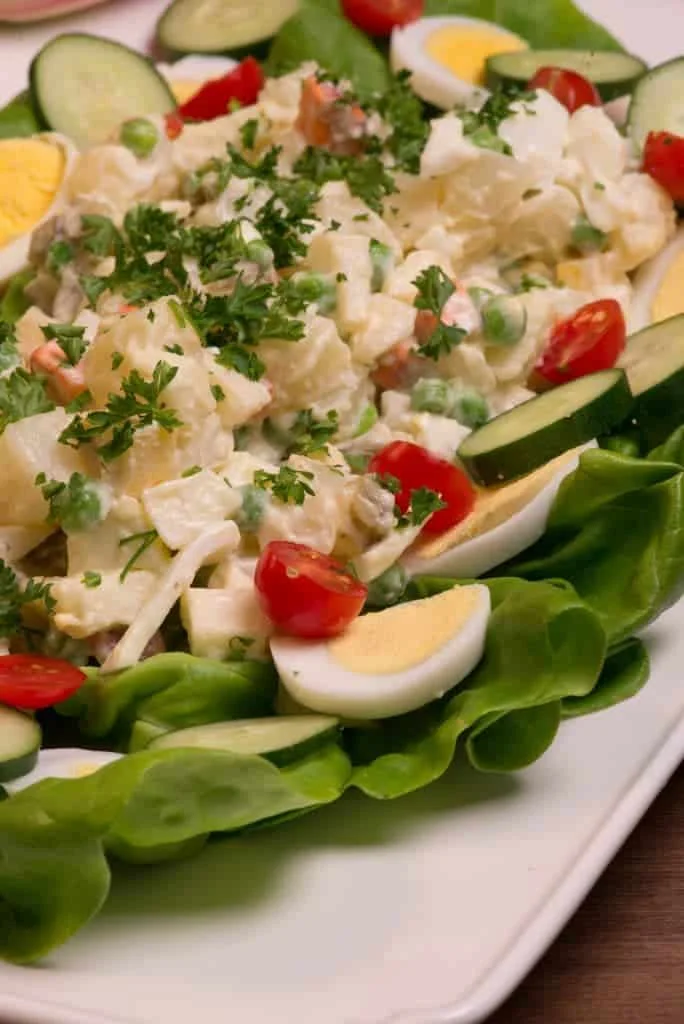
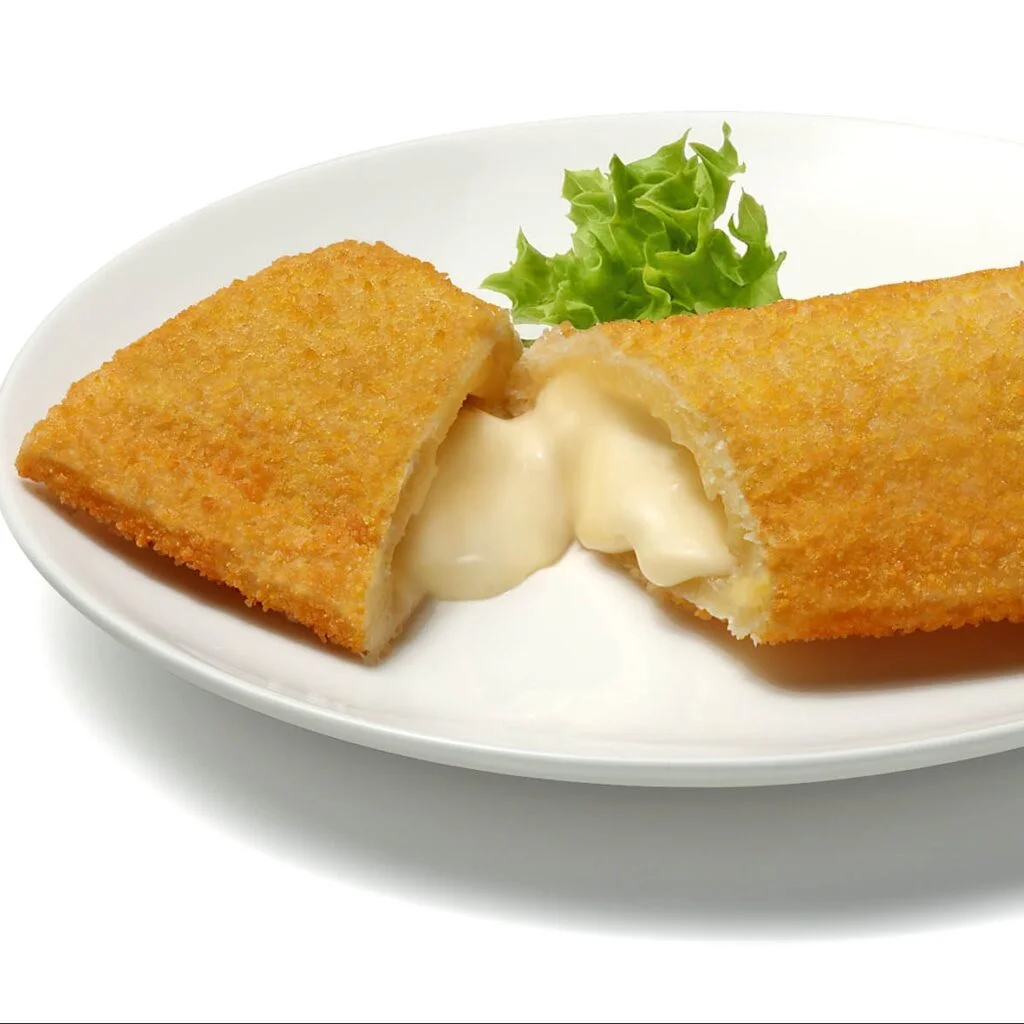



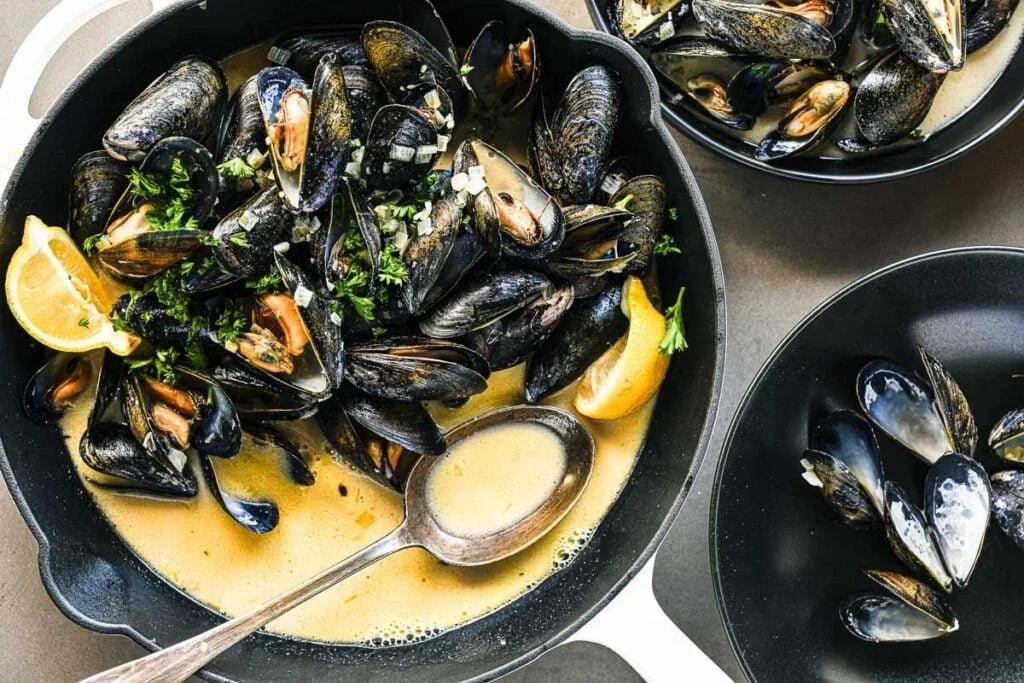
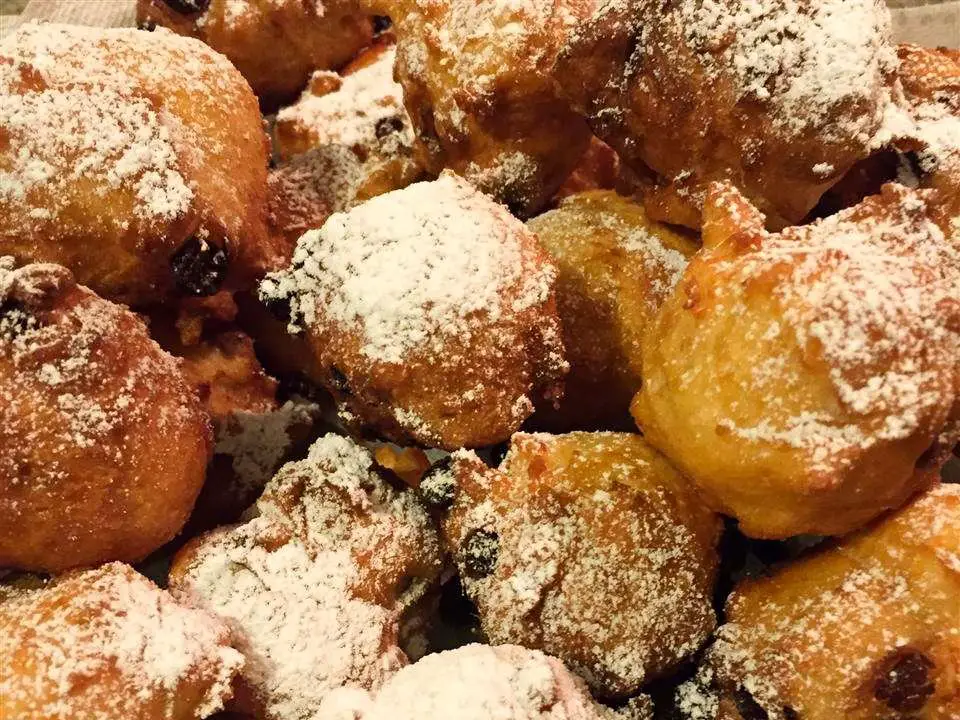
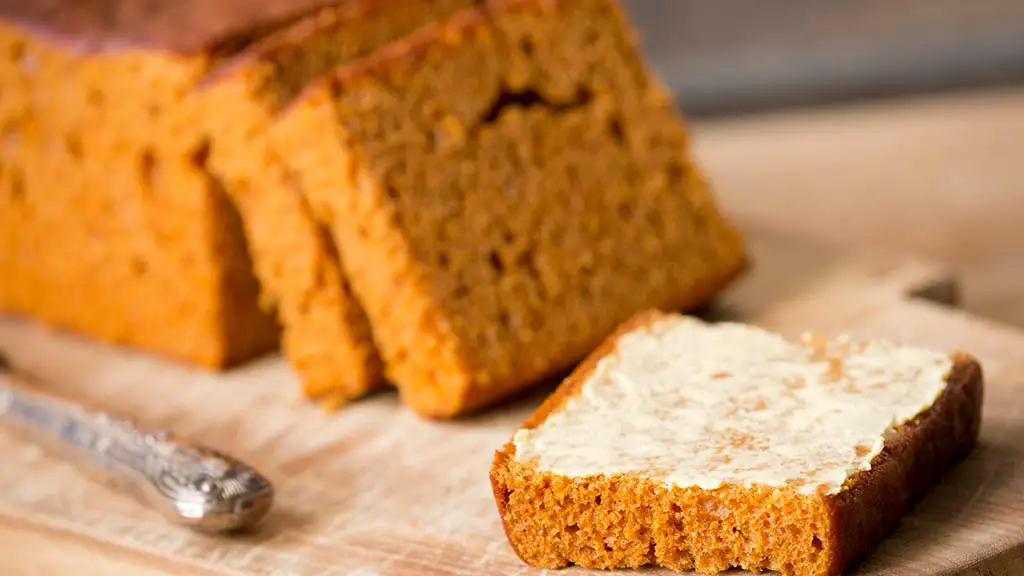

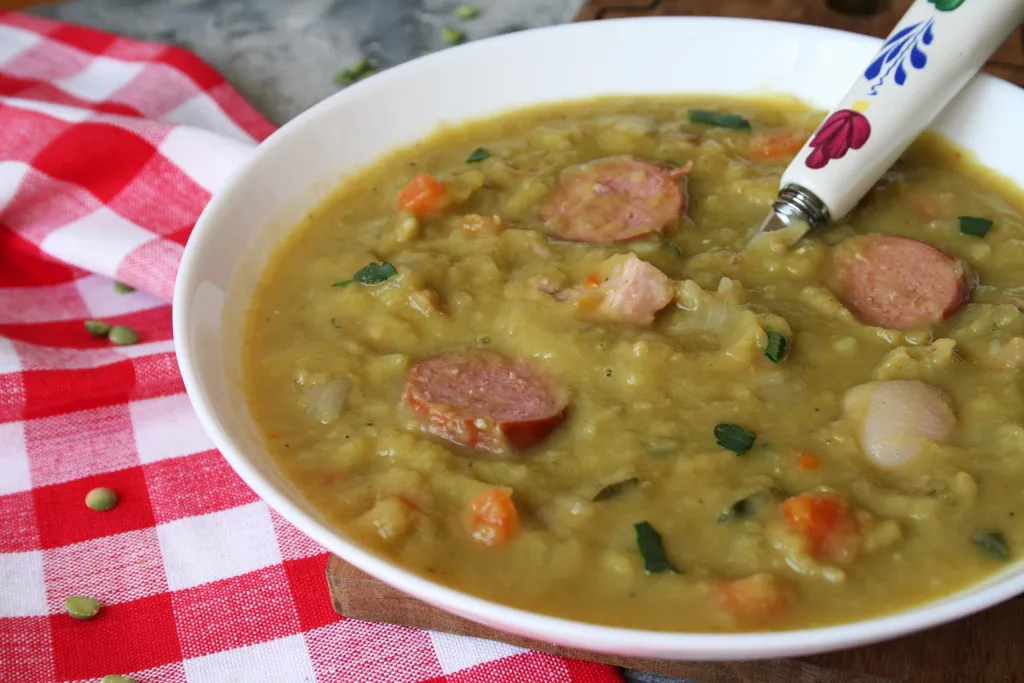


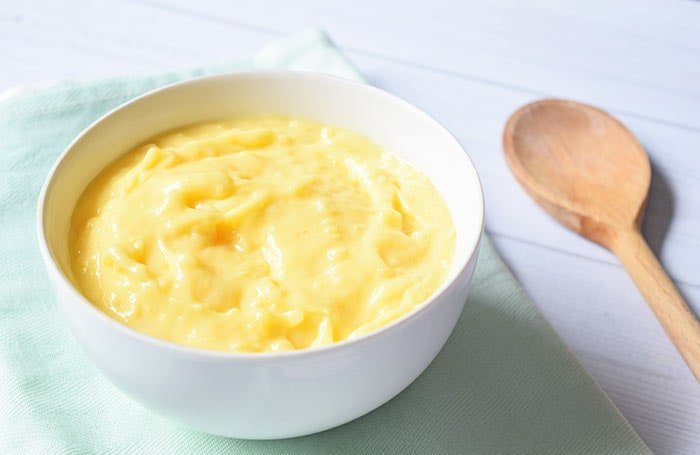
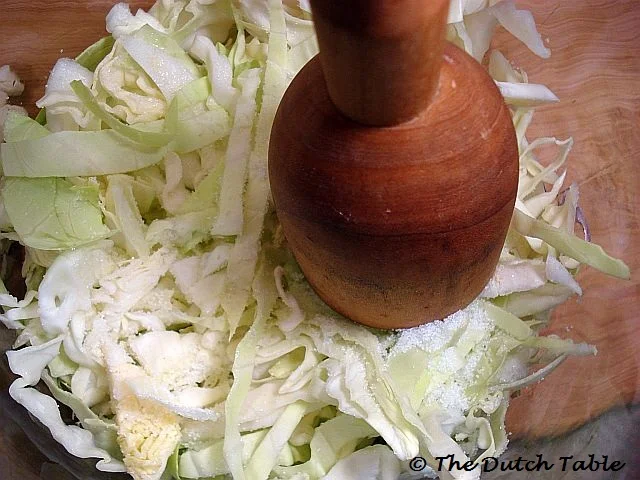
Interesting Facts About the Netherlands
Bicycle Heaven

The Netherlands is renowned as the “Bicycle Capital of the World.” With more bicycles than residents, it’s no surprise that cycling is a way of life. There are even more bikes than parking spaces in major cities!
Flower Power
The Dutch are famous for their love of flowers, particularly tulips. Keukenhof, the world’s largest flower garden, is located in the Netherlands and showcases millions of tulips annually.
Dutch Masters of Art
The Netherlands is home to some of the greatest artists in history, including Rembrandt and Vincent van Gogh. The Dutch art scene has left an indelible mark on the world, with masterpieces displayed in museums across the globe.
The Land of Windmills

Windmills are iconic in the Dutch landscape, but did you know that there are still around 1,000 working windmills in the country? Originally used for various purposes, from grinding grain to pumping water, they now stand as a symbol of Dutch heritage.
Peculiar Street Names
Dutch street names can be quite amusing. For instance, there’s a street named “Gayway” in Amsterdam. The Dutch are known for their liberal mindset, and this is reflected even in their street names.
Flat as a Pancake

The Netherlands is incredibly flat, with about 26% of the country lying below sea level. In fact, the highest point in the country, Vaalserberg, is only 322 meters (1,056 feet) above sea level.
Royal Orange Tradition
The Dutch royal family is part of the House of Orange-Nassau. This has led to a national love for the color orange, especially during events like King’s Day, where the entire country turns into a sea of orange.
Cheese Galore
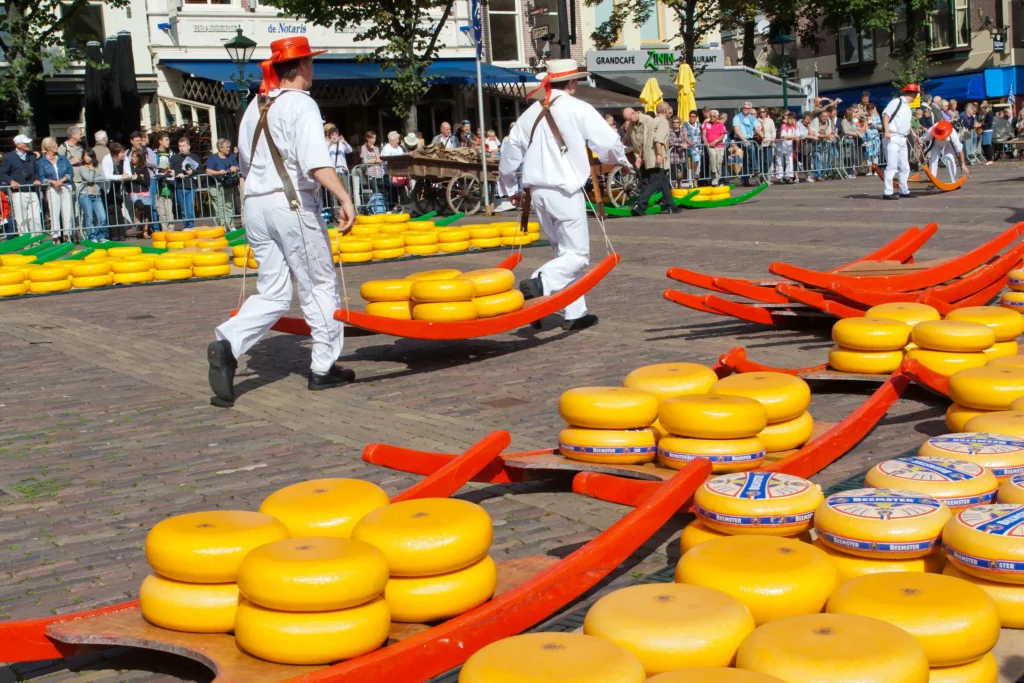
The Dutch are passionate about cheese, and they are the largest cheese exporters globally. Gouda and Edam are two of the most famous Dutch cheeses, and cheese markets like the one in Alkmaar attract tourists with their traditional cheese weighing ceremonies.
Dutch Tolerance
The Netherlands is known for its tolerance and progressive policies. It was the first country in the world to legalize same-sex marriage in 2001, showcasing its commitment to equality.
Ingenious Water Management
Over a third of the Netherlands is prone to flooding, so the Dutch have become experts in water management. The country is dotted with an intricate system of dikes, canals, and pumps, with the Delta Works being one of the most impressive feats of engineering to keep the land dry.
F1 World Champion – Max Verstappen is Dutch

Although Formula 1 world champion Max Verstappen’s heritage is from Brussels and the Netherlands, he identifies as Dutch.
Reference
- Max Verstappen: Taking the F1 World by Storm
- Max Verstappen Height and Weight Advantage
- Max Verstappen Cars Collection
A Culinary Journey Through Time: Dutch Cuisine & Its Historical Tapestry

The Netherlands, a land sculpted by rivers and shaped by trade, boasts a cuisine as rich and storied as its history. From the early hunter-gatherers to the Golden Age spice trade, each period has left its mark on the Dutch plate, creating a unique culinary tapestry. Let’s embark on a historical and delicious journey, exploring how different eras have influenced Dutch cuisine:
Prehistory (Before 500 BC)
Foragers and Farmers: The earliest inhabitants, hunter-gatherers, subsisted on wild plants, fish, and game. Farming brought grains, legumes, and livestock, laying the foundation for a basic diet.
Roman Era (50 BC – 400 AD)
Roman Influence: Trade with the Roman Empire introduced fruits, vegetables, and spices like coriander and cumin. Wine and olive oil also made their appearance.
Early Middle Ages (400-1000 AD)
Subsistence Farming: Focus shifted back to simple, locally produced foods like rye bread, vegetables, and dairy products. Meat consumption remained limited.
High Middle Ages (1000-1300 AD)
Spice Trade Beginnings: Spice routes opened, bringing ginger, nutmeg, and pepper, adding new flavors and preserving techniques. Herring fishing flourished, becoming a staple.
Late Middle Ages (1300-1500 AD)

Urbanization and Diversification: Growing cities saw taverns and inns offering heartier fare like stews, sausages, and cheese. Regional specialties like Limburg cheese and Zeeland oysters emerged.
Burgundian Netherlands (1384-1477)
A Feast for the Wealthy: The opulent Burgundian court introduced elaborate banquets with roasted meats, pastries, and imported delicacies. Spices became a status symbol.
Columbian Exchange (1500’s)
One of the most significant moments was the Columbian Exchange. This exchange between the Americas and Eurasia in the fifteenth century introduced new foods to both continents.
Americans discovered apples, rice, pigs, and chickens, while Europeans gained access to potatoes, tomatoes, cocoa, and chillies. Yet, most of these foodstuffs did not reach ordinary people due to poverty.
Meat was so expensive that many were vegetarians by necessity. Only the well-off enjoyed more varied and internationally influenced meals.
Dutch Revolt (1568-1648)

Simple Fare During War: Food shortages during the war years led to simpler, more practical dishes like “hutspot” (stew) and “pannenkoeken” (pancakes).
Golden Age (1600-1700)
Spice Trade Boom: Dutch dominance in the spice trade brought exotic ingredients like cloves, cinnamon, and turmeric, transforming Dutch cuisine. Coffee, tea, and chocolate became popular.
Global Influences: Trade partnerships with Indonesia and other colonies introduced new ingredients like rice, soybeans, and tropical fruits, broadening the culinary palette.
18th-19th Centuries
Economic Decline and Consolidation: Economic struggles led to a return to simpler dishes. Coffee houses became social hubs, and “stamppot” (mashed potatoes with vegetables) became a national comfort food.
1900-1945: Growing Prosperity and Adversity
Around the early twentieth century, the average worker’s diet included tea, butter or lard, and some meat. However, World War I caused setbacks, leading to food shortages.
The interwar period (1920s-1930s) marked another pivotal moment. Despite the economic crisis, rising living standards allowed for a more varied diet.
Processed foods gained popularity, including condensed milk, cookies, and stock cubes. Canned foods freed fruits and vegetables from seasonality.

The Second World War had a profound impact, culminating in the hunger winter of 1944-1945, during which thousands died due to shortages.
Post-War Era and Globalization
After World War II, Dutch cuisine underwent significant changes. Influenced by its colonies (especially the Dutch East Indies), it became more cosmopolitan.
Major cities now represent most international cuisines, and there’s renewed interest in taste.
Modernization and Immigration: Industrialization and globalization brought processed foods and new culinary influences. Immigration from Indonesia and Suriname added diversity, introducing dishes like “gado-gado” and “roti”.
Focus on Freshness and Sustainability: Today, Dutch cuisine emphasizes fresh, locally sourced ingredients, and organic farming practices are gaining popularity. Traditional dishes are still enjoyed, but with lighter interpretations.
References:
This is just a brief overview, and each period holds stories waiting to be explored. So, delve deeper, savor the flavors, and discover how Dutch history continues to shape its vibrant culinary scene!
The Dutch Landscape: Shaping Cuisine Through Climate and Geography

The Netherlands, shaped by the North Sea and crisscrossed by rivers, boasts a unique climate and geography that have profoundly impacted its cuisine. Here’s how:
Land & Sea Bounty
- Flat & Fertile: The Netherlands’ extensive lowlands provide fertile soil, perfect for growing vegetables like cabbage, potatoes, and onions, which became staples. Dairy farming thrives, making cheese a defining aspect of Dutch cuisine.
- Aquatic Influence: The North Sea and freshwater systems teem with fish, especially herring, cod, and mussels, making seafood a cornerstone of Dutch dishes like “kibbeling” and “mosselen” (steamed mussels).
- Polders: These reclaimed lands are rich in nutrients, allowing for agriculture. Polders produce vegetables, grains, and dairy.
- Rivers and Canals: These waterways facilitate transportation and trade, influencing the availability of ingredients.
- Windmills: Iconic Dutch windmills grind grains into flour, essential for bread and pastries.
- Deltas: The Rhine, Meuse, and Scheldt rivers form fertile deltas, supporting agriculture.
Temperate Climate

- Limited Seasonality: Unlike countries with distinct seasons, the Netherlands experiences milder variations. This led to a focus on preserving food through salting, smoking, and pickling, techniques seen in “zuurkool” (sauerkraut) and “rookworst” (smoked sausage).
- Hearty Fare: The cool, damp climate favored dishes that provided warmth and energy. Think stews like “hutspot” and “snert” (pea soup), and dense breads like “roggebrood” (rye bread).
- Rainfall is abundant, which contributes to lush green landscapes and fertile soil. Dutch farmers grow crops like potatoes, cabbage, carrots, and onions.
- The cool climate favors dairy farming, leading to high-quality milk, cheese, and butter production.
- However, the relatively mild temperatures limit the cultivation of certain fruits and spices.
Trade & Exploration
- Spice Route Impact: Despite its climate, Dutch dominance in the spice trade during the Golden Age brought exotic flavors like pepper, nutmeg, and ginger, adding complexity to traditional dishes.
- Global Exchange: Colonial ties with Indonesia and Suriname introduced rice, soy, and tropical fruits, enriching the Dutch palate with dishes like “gado-gado” and “roti”.
Modern Adaptation
- Greenhouse Innovation: Dutch ingenuity in greenhouse technology allows for year-round production of fresh fruits and vegetables, expanding the culinary repertoire.
- Sustainable Focus: Growing concerns about climate change encourage sustainable practices like local sourcing and organic farming, reflecting in modern Dutch cuisine.
Additional Points
- The flat landscape, susceptible to flooding, led to the development of polders (reclaimed land). This increased agricultural land, further impacting food production.
- Windmills, a quintessential Dutch symbol, were used for centuries to grind grains and power food processing, shaping traditional dishes like “pannenkoeken” (pancakes).
Impact on Cuisine:
- Stamppot: The Dutch love hearty, one-pot dishes. Stamppot combines mashed potatoes with vegetables like kale, sauerkraut, or carrots. It reflects the use of local produce.
- Herring: Raw herring served with onions and pickles is a classic Dutch street food. The sea’s influence is evident here.
- Cheese: The Netherlands is famous for its cheeses, such as Gouda and Edam. Dairy farming thrives due to the climate.
- Breads and Pastries: Windmills grind flour for bread, pancakes, and pastries. The flat landscape allows for extensive wheat cultivation.
References
Understanding the Essence of Dutch Cuisine

Dutch cuisine is characterized by its hearty, comforting nature. It’s a cuisine that’s built on the pillars of practicality and sustenance, reflecting the nation’s pragmatic spirit.
Meals are often straightforward, with a focus on local ingredients like potatoes, vegetables, and meat. Dairy products, particularly cheese, are a national treasure, with the Netherlands being one of the largest cheese exporters in the world.
Dutch cuisine is not about complexity or pretense but about honest food that nourishes and satisfies. It’s a culinary tradition that celebrates the seasons, with stamppot in the winter and fresh herring in the summer, showcasing a deep connection to the land and sea.
Dutch Culinary Traditions
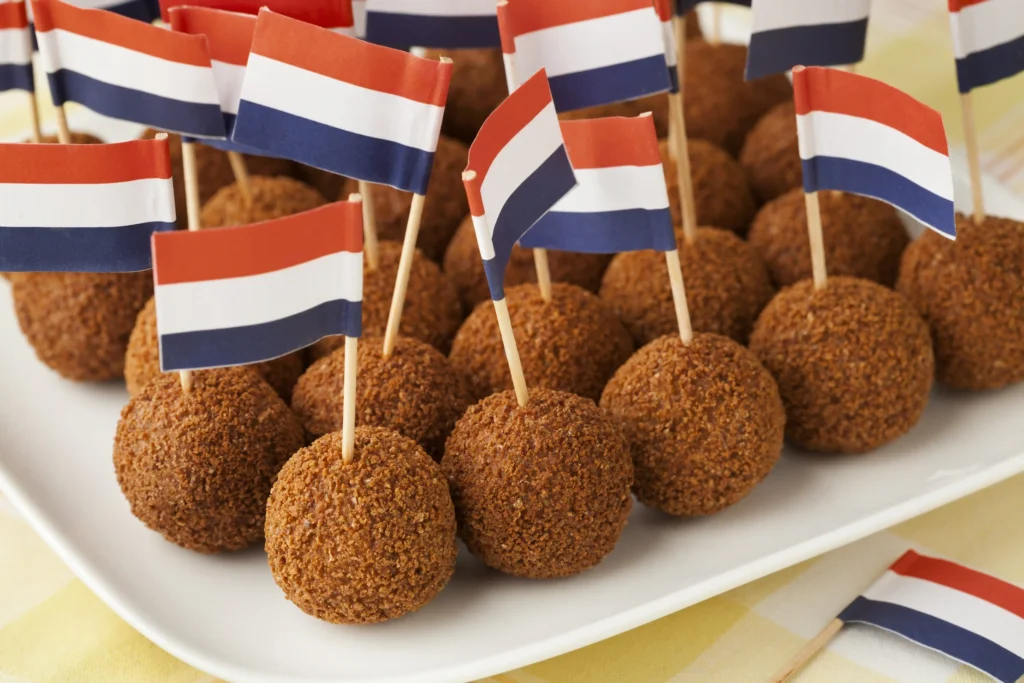
Dutch culinary traditions are a tapestry of regional practices and festive customs. From the conviviality of sharing a rijsttafel, a spread of Indonesian dishes that pay homage to the colonial past.
To the winter comfort of stamppot, a mash of potatoes and vegetables, these traditions are ingrained in the Dutch way of life.
The celebration of holidays with specific foods, like oliebollen during New Year’s Eve or kruidnoten for Sinterklaas, highlights the importance of food in Dutch culture.
These traditions are not just about the act of eating but about the communal experience, reflecting the Dutch value of gezelligheid, a sense of cozy togetherness.
Exploring the Netherlands’ Ingredients: The Flavors of the Netherlands

The flavors of the Netherlands are as diverse as its landscapes. The fertile soil produces a variety of vegetables like kale, leeks, and carrots, which are staples in the Dutch diet.
The North Sea provides a bounty of fish, including herring, mackerel, and cod, often enjoyed raw or lightly pickled. Dutch cheeses, from Gouda to Edam, are renowned for their rich flavors and textures.
Spices such as cinnamon, nutmeg, and cloves, remnants of the spice trade, still feature prominently in Dutch baking. These ingredients come together in the Dutch kitchen to create a cuisine that is both grounded in its history and open to global influences, a true reflection of the Dutch spirit.
Exploring Dutch Cuisine Techniques
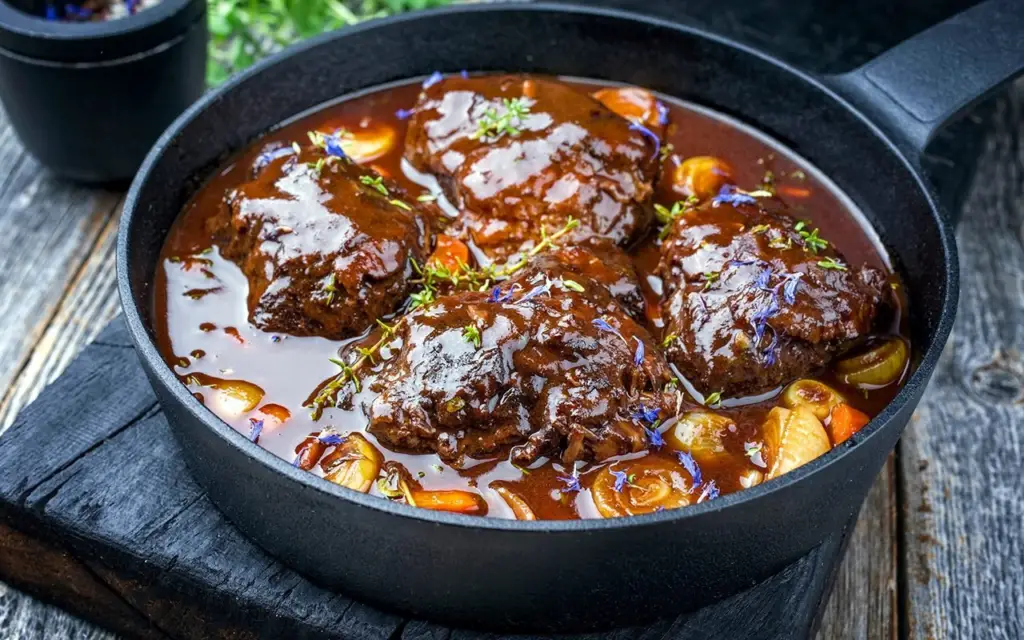
One of the unique aspects of Dutch cuisine is the simplicity of its cooking techniques. The Dutch know how to let the natural flavors of fresh, locally-sourced ingredients shine through in their dishes. Here are some Dutch cooking techniques:
| Technique | Description |
|---|---|
| Braising | Cooking food slowly in a small amount of liquid to tenderize and infuse flavors. |
| Stewing | Cooking food slowly in a pot with a moderate amount of liquid until tender and flavors are blended. |
| Baking | Cooking food in an oven with dry heat, such as bread, pastries, and casseroles. |
| Frying | Cooking food in hot oil until crispy, such as bitterballen and kroketten. |
Dutch chefs also use herbs and spices to add depth and complexity to their dishes. Some of the most commonly used herbs and spices in Dutch cuisine include bay leaves, thyme, parsley, nutmeg, and cloves. Chefs often combine these ingredients with beer, wine, or vinegar to create flavorful marinades and sauces.
Whether you are a seasoned cook or a beginner in the kitchen, experimenting with these simple yet effective Dutch cooking techniques can take your culinary skills to the next level.
Embracing Authentic Dutch Cuisine
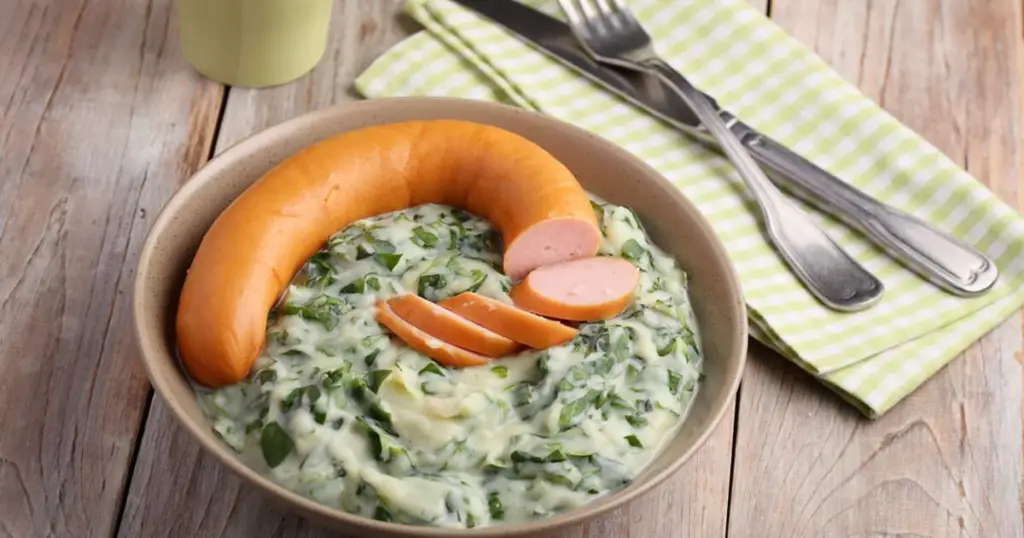
Authentic Dutch cuisine is more than just a collection of recipes or dishes. It’s about the cultural traditions, the cooking techniques, and the ingredients that make Dutch food unique and delicious. To truly embrace authentic Dutch cuisine, we need to appreciate the importance of quality ingredients and the connection between food and Dutch identity.
One of the hallmarks of authentic Dutch cuisine is the use of seasonal and locally sourced ingredients. From fresh fish and shellfish to hearty vegetables and fruits, Dutch chefs take pride in using the best ingredients available.
This not only ensures that the flavors are at their peak but also supports local farmers and promotes sustainability.
Cultural influences have also played a significant role in shaping Dutch food traditions. The Dutch East India Company brought exotic spices and flavors that have become integral to Dutch cuisine, such as nutmeg, pepper, and cinnamon.
Similarly, colonialism impacted the use of ingredients such as rice and potatoes, which have since become staples in Dutch dishes.
Dutch Cuisine Specialties: Beyond the Basics
When it comes to Dutch food specialties, most people think of the popular dishes like stroopwafels and bitterballen. However, Dutch cuisine has a lot more to offer than just the basics. From regional cheeses to unique sweets, there are many other Dutch food specialties worth exploring.
One of the most famous Dutch cheeses is Gouda.
The city of Gouda in the Netherlands is the inspiration for the name of this semi-hard cheese M\made from cow’s milk. It has a creamy and nutty flavor and diners eat it with bread or as a snack. Another popular Dutch cheese is Edam which has a distinctive shape and mild flavor.

For those with a sweet tooth, Dutch sweets like hagelslag and drop are a must-try. People typically eat the Hagelslag chocolate sprinkles on bread for breakfast or as a snack.
The Dutch love Drop which is a type of liquorice.. It comes in a variety of shapes and flavors and is a popular treat at Dutch parties and celebrations.
Dutch Cuisine food specialties consists of more than cheese and sweets. There are also a number of delicious Dutch snacks and street foods to try.
For example, kibbeling is a popular snack. Chefs make it from battered and fried codfish and typically serve it with a dipping sauce.
Poffertjes, small fluffy pancakes dusted with powdered sugar, are a favorite at Dutch markets and fairs.
Exploring Dutch food specialties allows us to discover the many unique and diverse flavors of Dutch cuisine. Whether you have a sweet tooth or prefer savory snacks, there is something for everyone to enjoy in the world of Dutch food specialties.
How Healthy is Dutch Cuisine?

The Netherlands paints a picture of tall, cycling citizens, suggesting a healthy population fueled by their beloved “stroopwafels” and “bitterballen.” But, is Dutch cuisine truly a recipe for health? Let’s delve into the nutritional landscape and see how it affects the national health:
Dutch Cuisine Strengths
- Vegetable Power: Dutch plates boast a generous helping of veggies like cabbage, onions, and leafy greens, packing vital vitamins and minerals.
- Dairy Delights: Cheese, a national treasure, provides calcium and protein, crucial for bone health and growth.
- Seafood Symphony: Herring, cod, and mussels offer omega-3 fatty acids, beneficial for heart health and brain function.
- Fiber Fantastic: Rye bread, a staple, contributes valuable fiber for digestion and gut health.
Dutch Cuisine Challenges
- Fried Food Friendliness: Dutch cuisine embraces fried delights like “frikandel” and “kroketten,” leading to higher saturated fat intake.
- Salty Snacks: Cheese and processed meats, while flavorful, can contribute to a high sodium intake, raising blood pressure concerns.
- Sugar Surprise: “Vla” (custard) and stroopwafels add sweetness, potentially influencing sugar intake, if not enjoyed in moderation.
National Health Snapshot
While the Netherlands boasts a high life expectancy, some health concerns emerge:
- Obesity: Rates are slowly rising, especially among children, raising concerns about chronic diseases like diabetes.
- Cardiovascular Disease: Despite improvements, it remains a leading cause of death, possibly linked to saturated fat and sodium intake.
- Cancer: Cancer rates are comparable to other developed countries, but remain a significant health concern.
The Future of Dutch Health
Awareness of these challenges is driving positive changes:
- Focus on Freshness: Initiatives promote locally sourced, seasonal produce and healthy cooking practices.
- Shifting Preferences: Consumers are increasingly opting for leaner protein and lower-fat alternatives.
- Nutritional Awareness: Campaigns encourage healthier choices, helping people make informed decisions.
Dutch cuisine offers a balanced mix of nutrients, but some challenges exist. The good news is, the Netherlands is actively adapting its food culture and promoting healthier choices. By embracing fresh, balanced meals and mindful moderation, the Dutch can continue to enjoy their unique culinary heritage while building a healthier future.
References
- Dutch National Institute for Public Health and the Environment (RIVM)
- World Health Organization (WHO)
- Food and Agriculture Organization (FAO)
The Legacy of Dutch Cuisine

As we explore the world of Dutch cuisine, it’s impossible to ignore the impact of Dutch culinary traditions on the country’s food culture.
Dutch cuisine is a reflection of the Netherlands’ historical and cultural heritage, blending elements of local agriculture with global influences from Dutch colonies and trade partners.
The Dutch East India Company played a significant role in shaping Dutch culinary traditions, introducing spices such as nutmeg, cinnamon, and cloves to the Netherlands. These exotic ingredients were often used in traditional Dutch dishes like stews and sausages, adding new flavors and aromas that were previously unknown in the country.
Another significant influence on Dutch cuisine was the impact of colonialism on ingredients. The Dutch colonized Indonesia, Suriname, and the Caribbean, among other locations, bringing back with them a variety of new ingredients and cooking techniques.
This fusion of Dutch and Indonesian cuisines is evident in dishes like nasi goreng, a rice-based dish that is now a popular street food in the Netherlands.
Dutch Cuisine Remains True to Its Foundations
Despite the influences of other cultures, Dutch culinary traditions remain a fundamental aspect of Dutch cuisine. From the emphasis on fresh and locally sourced ingredients to the use of hearty and comforting flavors, Dutch cooking techniques have evolved over time while still retaining their essence and character.
“Dutch cuisine is a reflection of the Netherlands’ historical and cultural heritage, blending elements of local agriculture with global influences from Dutch colonies and trade partners.”
Today, Dutch cuisine continues to evolve, incorporating new ingredients and culinary techniques while still retaining its roots in tradition.
This ongoing evolution is a testament to the enduring appeal and versatility of Dutch culinary traditions, which will undoubtedly continue to shape the country’s food culture for generations to come.
Dutch Cuisine: A Taste of Heritage
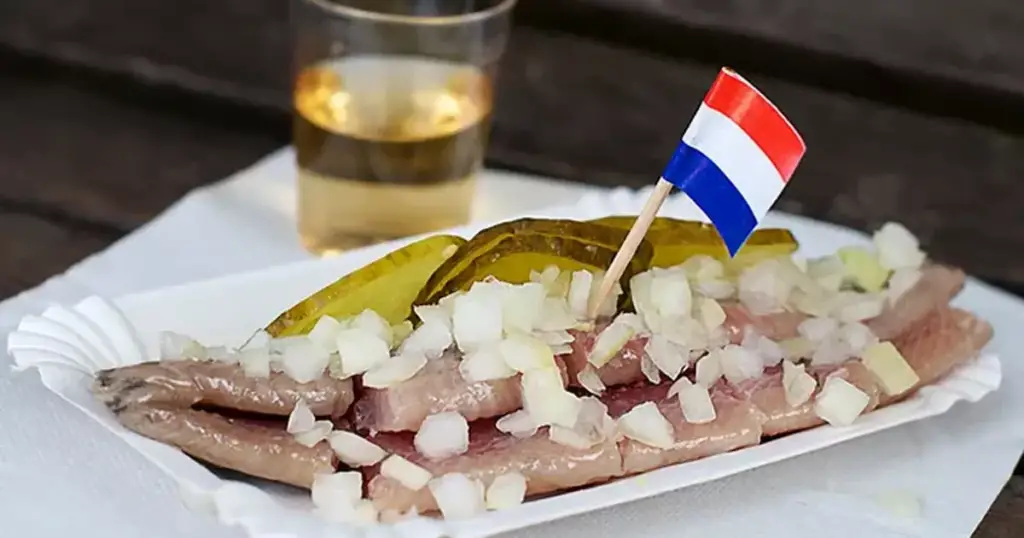
When it comes to traditional Dutch dishes, there are so many classic options to choose from. From comforting stews to hearty meat dishes, Dutch cuisine is all about simple, comforting food that warms the soul.
One of the most popular dishes is stamppot, a dish made by mashing potatoes with vegetables such as kale, carrots, or sauerkraut. Another favorite is erwtensoep (pea soup), a thick and hearty soup filled with vegetables and smoked sausage.
And let’s not forget about kroketten, deep-fried meat ragout croquettes that are a favorite snack across the country.
For a taste of seafood, try haring (herring), a traditional Dutch treat often served with onions and pickles. Another seafood dish is kibbeling, deep-fried chunks of white fish served with a creamy garlic sauce.
No discussion of Dutch cuisine would be complete without mentioning bitterballen, small, deep-fried meatballs filled with a thick gravy that oozes out when you take a bite. Chefs often serve these little balls of deliciousness as a snack or appetizer.
Classic Dutch Dishes

Classic Dutch dishes include stroopwafels, bitterballen, and herring. Stroopwafels are thin, sweet waffle cookies filled with caramel syrup, while bitterballen are deep-fried meatballs typically served as a snack.
Herring, a popular street food, is often eaten raw or pickled and served with onions. These traditional dishes offer a taste of Dutch cuisine.
National Dutch Dish
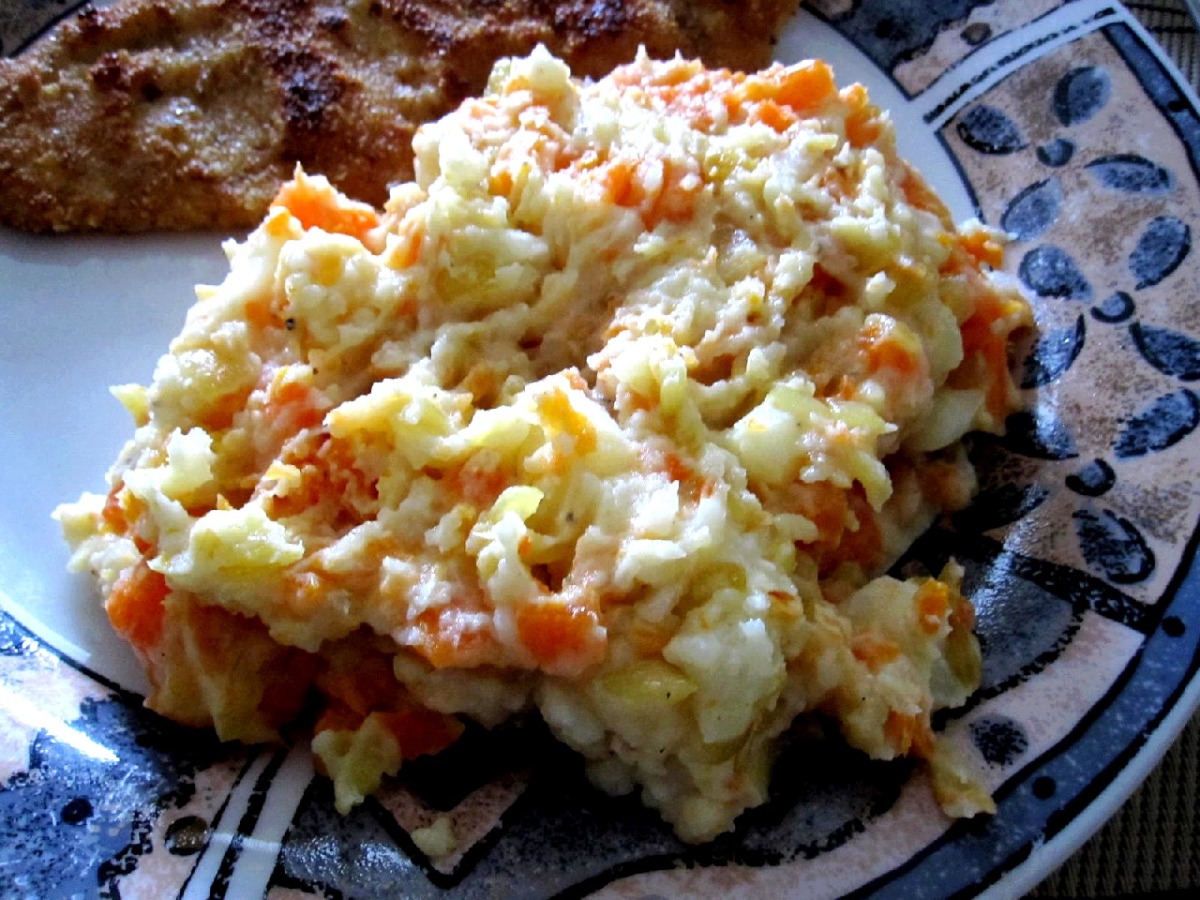
Hutspot is a renowned national Dutch dish. This traditional comfort food consists of mashed potatoes, carrots, and onions, often served with smoked sausage or stewed meat.
The flavors blend together to create a hearty and flavorful meal that has been loved by generations in the Netherlands.
Amsterdam National Dish

The national dish of Amsterdam is herring, often served as raw herring with onions and pickles. It is a popular street food and can be found in many seafood stands and restaurants throughout the city.
Dutch Recipes you can Try in Your Own Kitchen
Whether you are a fan of meat, seafood, or veggies, Dutch cuisine has something to offer everyone. These classic Dutch dishes are sure to give you a taste of the country’s rich culinary heritage.
Dutch Food – Oliebollen

Savoring Tradition: Dutch Oliebollen Recipe
Oliebollen, translating to “oil balls,” is a cherished Dutch treat that adds a touch of warmth to the winter season. Originating from the Netherlands, this deep-fried doughnut-like delight has a history dating back to the Middle Ages when Germanic tribes prepared similar treats during Yule celebrations.
Today, Oliebollen are an integral part of Dutch New Year’s Eve traditions, symbolizing the sweetness of life and the end of the old year. Let’s embark on a delightful journey into Dutch culinary history and whip up a batch of these tempting Oliebollen in our own kitchens.
Dutch Food – Ingredients for Dutch Oliebollen
- 2 cups all-purpose flour
- 1 cup raisins
- 1 medium apple, peeled and diced
- 1 packet (2 1/4 teaspoons) active dry yeast
- 1 cup lukewarm milk
- 2 tablespoons sugar
- 1/2 teaspoon salt
- 1 teaspoon ground cinnamon
- Vegetable oil for frying
- Powdered sugar for dusting
Dutch Food – Recipe for Dutch Oliebollen
Preparing the Yeast Mixture
- Activate Yeast:
- In a small bowl, combine the lukewarm milk, sugar, and active dry yeast. Let it sit for about 5-10 minutes until it becomes frothy.
Mixing the Batter
- Flour Base:
- In a large mixing bowl, combine the flour, salt, and ground cinnamon.
- Incorporating Wet Ingredients:
- Gradually add the yeast mixture to the flour, stirring continuously to avoid lumps.
- Adding Fruits:
- Fold in the raisins and diced apple into the batter until evenly distributed.
Allowing the Dough to Rise
- Resting Time:
- Cover the bowl with a kitchen towel and let the dough rise in a warm place for approximately 1-2 hours or until it has doubled in size.
Frying the Oliebollen
- Heating Oil:
- In a deep fryer or large pan, heat vegetable oil to 375°F (190°C).
- Forming Dough Balls:
- Using two spoons, carefully drop spoonfuls of dough into the hot oil, frying until golden brown on all sides.
- Draining and Dusting:
- Remove the Oliebollen from the oil with a slotted spoon, draining any excess oil. Dust the freshly fried Oliebollen with powdered sugar.
Serving Dutch Oliebollen
- Enjoying Warm:
- Serve these delightful Dutch Oliebollen warm, sharing the sweetness and joy with family and friends.
Serving Size: 8 people
Preparation Time: 2 hours
Cooking Time: 15 minutes
Nutritional Information:
- Calories: 180 per serving
- Protein: 3g per serving
- Fat: 5g per serving
- Carbohydrates: 30g per serving
- Fiber: 2g per serving
Dutch Food – Mosselen (Steamed Mussels)

Unveiling Dutch Seaside Charm: Mosselen (Steamed Mussels) Recipe
Mosselen, a delightful Dutch dish, invites you to savor the taste of the North Sea with each tender mussel. Originating from the coastal regions of the Netherlands, this recipe reflects the rich maritime history of Dutch cuisine.
Steamed to perfection and seasoned with a touch of coastal flair, Mosselen is a beloved dish enjoyed in seaside towns and beyond. Let’s dive into the coastal vibes of the Netherlands as we prepare this simple and flavorful Mosselen recipe right in our own kitchens.
Dutch Food – Ingredients for Dutch Mosselen
- 2 pounds fresh mussels, cleaned and debearded
- 1 cup dry white wine
- 1 onion, finely chopped
- 2 cloves garlic, minced
- 1 celery stalk, finely chopped
- 1 carrot, peeled and finely chopped
- 1 bay leaf
- 1/2 cup fresh parsley, chopped
- Salt and pepper to taste
- Crusty bread for serving
Dutch Food – Recipe for Dutch Mosselen
Preparing the Mussels
- Cleaning Mussels:
- Scrub and clean the mussels under cold running water, removing any debris or beards.
Creating the Aromatic Base
- Sautéing Vegetables:
- In a large pot, sauté the chopped onion, garlic, celery, and carrot until softened.
- Infusing Flavor:
- Add the bay leaf and half of the chopped parsley to the sautéed vegetables, allowing the flavors to meld.
Cooking the Mosselen
- Adding Mussels:
- Place the cleaned mussels in the pot, pouring the dry white wine over them.
- Seasoning:
- Season the mussels with salt and pepper to taste, giving them a gentle stir to distribute the flavors.
- Steaming Process:
- Cover the pot and steam the mussels over medium heat for approximately 5-7 minutes or until the shells open. Discard any unopened mussels.
Serving Dutch Mosselen
- Garnishing:
- Sprinkle the remaining chopped parsley over the steamed mussels for a fresh burst of flavor.
- Serving with Bread:
- Serve the Mosselen hot with crusty bread on the side, perfect for soaking up the delicious broth.
Serving Size: 4 people
Cooking Time: 15 minutes
Nutritional Information:
- Calories: 250 per serving
- Protein: 20g per serving
- Fat: 5g per serving
- Carbohydrates: 15g per serving
- Fiber: 2g per serving
Dutch Food – Hagelslag

Sweet Sprinkles: Exploring the Dutch Delight of Hagelslag
Hagelslag, a beloved Dutch breakfast tradition, is a delightful way to start the day with a sprinkle of sweetness. Originating from the Netherlands, this simple yet charming treat has a rich history dating back to the early 20th century.
Typically enjoyed on buttered bread, hagelslag is a staple in Dutch households, adding a burst of color and flavor to breakfast tables across the country. Let’s delve into the world of Dutch hagelslag and bring a touch of this sweet tradition to our own homes.
Dutch Food – Ingredients for Dutch Hagelslag
- Slices of fresh bread
- Unsalted butter
- Hagelslag (chocolate or fruit-flavored sprinkles)
Dutch Food – Recipe for Dutch Hagelslag
Preparing the Bread
- Toasting the Bread (Optional):
- Toast slices of fresh bread to your liking. This step is optional but adds an extra crunch to your hagelslag experience.
- Buttering the Bread:
- Spread a thin layer of unsalted butter on each slice of bread. This provides a smooth base for the hagelslag to adhere to.
Applying the Hagelslag
- Sprinkling the Magic:
- Generously sprinkle the hagelslag over the buttered bread. You can choose from classic chocolate hagelslag or explore various fruit-flavored options for a fruity twist.
- Getting Creative:
- Feel free to mix and match different hagelslag flavors or create patterns on your bread for a playful and visually appealing breakfast.
Serving Dutch Hagelslag
- Pairing Options:
- Serve your hagelslag-topped bread with a side of fresh fruit, a cup of yogurt, or a glass of milk for a well-balanced and delicious breakfast.
- Sharing the Joy:
- Hagelslag is perfect for sharing with family and friends. Arrange a colorful hagelslag bar and let everyone customize their breakfast.
Serving Size: 4 people
Preparation Time: 5 minutes
Nutritional Information:
- Calories: 150 per serving (without bread)
- Protein: 2g per serving
- Fat: 8g per serving
- Carbohydrates: 18g per serving
- Fiber: 1g per serving
Bring a taste of Dutch sweetness to your mornings with this simple and delightful hagelslag recipe.
Dutch Food – Zuurkool
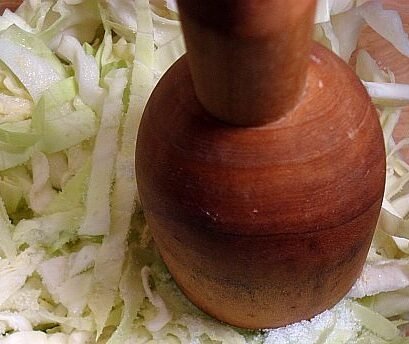
Embracing Dutch Comfort: Zuurkool (Sauerkraut) Recipe
Zuurkool, a classic Dutch comfort dish, is a flavorful concoction that warms the soul, originating from the Netherlands. Rooted in Dutch culinary traditions, this dish showcases sauerkraut, a fermented cabbage product, blended with potatoes and smoked sausage.
Zuurkool is a hearty, wintertime favorite, hailing from a region known for its love of robust and satisfying meals. Let’s delve into the Dutch kitchen and craft our own bowl of Zuurkool goodness.
Dutch Food – Ingredients for Dutch Zuurkool
- 1 pound sauerkraut, drained
- 1 pound potatoes, peeled and diced
- 1 smoked sausage (about 1 pound)
- 1 onion, finely chopped
- 2 cloves garlic, minced
- 2 tablespoons butter
- 1/2 cup milk
- Salt and pepper to taste
- Fresh parsley for garnish (optional)
Dutch Food – Recipe for Dutch Zuurkool
Preparing the Ingredients
- Draining Sauerkraut:
- Drain the sauerkraut thoroughly, pressing out excess liquid. Rinse it under cold water if a milder flavor is preferred.
- Cooking Potatoes:
- Boil the diced potatoes until tender. Drain and set aside.
- Cooking Smoked Sausage:
- In a separate pot, simmer the smoked sausage in water for about 15-20 minutes until fully cooked. Slice it into rounds.
Creating the Zuurkool Mix
- Sautéing Aromatics:
- In a large pan, sauté the finely chopped onion and minced garlic in butter until translucent.
- Adding Sauerkraut:
- Incorporate the drained sauerkraut into the pan, stirring to combine with the aromatics.
- Blending Potatoes:
- Mash the boiled potatoes and add them to the sauerkraut mixture. Gradually add milk to achieve a creamy consistency.
- Seasoning:
- Season the Zuurkool mix with salt and pepper to taste. Allow the flavors to meld over medium heat.
Assembling Dutch Zuurkool
- Layering Smoked Sausage:
- Arrange the sliced smoked sausage over the Zuurkool mix, allowing it to warm through.
- Simmering:
- Let the Zuurkool simmer for an additional 10-15 minutes, ensuring all flavors are well-incorporated.
Serving Dutch Zuurkool
- Garnishing and Serving:
- Garnish with fresh parsley if desired. Serve the Zuurkool hot, embracing the comforting flavors of Dutch tradition.
Serving Size: 4 people
Cooking Time: 45 minutes
Nutritional Information:
- Calories: 400 per serving
- Protein: 15g per serving
- Fat: 20g per serving
- Carbohydrates: 35g per serving
- Fiber: 5g per serving
Bring a taste of Dutch coziness to your table with this heartwarming Zuurkool recipe.
Dutch Food – Snert (Traditional Dutch Split Pea Soup)

Embracing Dutch Winter Warmth: Snert (Traditional Dutch Split Pea Soup)
Discover the heartwarming flavors of winter in the Netherlands with Snert, a traditional Dutch Split Pea Soup. Rooted in Dutch culinary history, this hearty soup has been a winter staple for centuries, offering comfort and warmth during the chilly months.
Laden with split peas, vegetables, and smoky pork, Snert is a beloved dish that embodies the essence of Dutch coziness. Let’s journey into the Dutch kitchen and savor the wholesome goodness of Snert.
Dutch Food – Ingredients for Dutch Snert
- 1 pound split green peas
- 1 smoked pork hock (about 1 pound)
- 1 large onion, finely chopped
- 2 carrots, peeled and diced
- 2 potatoes, peeled and diced
- 1 leek, cleaned and sliced
- 2 celery stalks, diced
- 2 cloves garlic, minced
- 1 bay leaf
- 2 tablespoons vegetable oil
- Salt and pepper to taste
- Smoked sausage (rookworst) for serving
- Fresh parsley for garnish
Dutch Food – Recipe for Dutch Snert
Preparing the Ingredients
- Rinsing Split Peas:
- Rinse the split peas under cold water, removing any debris. Set them aside.
- Prepping Smoked Pork Hock:
- Rinse the smoked pork hock and place it in a large soup pot.
- Sautéing Aromatics:
- In a separate pan, sauté the chopped onion, carrots, leek, celery, and garlic in vegetable oil until softened.
Cooking Dutch Snert
- Boiling Peas and Pork:
- Add the rinsed split peas, sautéed vegetables, and bay leaf to the pot with the smoked pork hock. Cover with water and bring to a boil.
- Simmering Process:
- Reduce the heat to low and let the Snert simmer for 1.5 to 2 hours until the split peas are fully cooked and the soup has thickened.
- Shredding Pork:
- Remove the smoked pork hock, shred the meat, and return it to the pot. Discard the bone.
- Adjusting Seasoning:
- Season the Snert with salt and pepper to taste, adjusting as needed.
Serving Dutch Snert
- Serving with Smoked Sausage:
- Serve the Snert hot, accompanied by slices of smoked sausage (rookworst) and garnish with fresh parsley.
Serving Size: 6 people
Cooking Time: 2 hours
Nutritional Information:
- Calories: 300 per serving
- Protein: 15g per serving
- Fat: 8g per serving
- Carbohydrates: 40g per serving
- Fiber: 15g per serving
Warm your winter days with the wholesome goodness of Dutch tradition by enjoying a bowl of hearty Snert.
Dutch Food – Gado-Gado

Exploring Dutch-Indonesian Fusion: Gado-Gado Recipe
Embark on a culinary journey with a Dutch twist as we explore Gado-Gado, a vibrant and flavorful dish with roots in both Dutch and Indonesian cuisines. Originating from the Dutch colonial period in Indonesia, Gado-Gado showcases a delightful mix of fresh vegetables, tofu, and peanut sauce.
This fusion dish has become a beloved part of Dutch culinary culture, offering a harmonious blend of flavors and textures. Let’s recreate the magic of Gado-Gado in our own kitchens and savor the taste of this unique Dutch-Indonesian creation.
Dutch Food – Ingredients for Dutch Gado-Gado
- 1 cup green beans, trimmed and cut into bite-sized pieces
- 2 medium-sized potatoes, peeled and diced
- 2 carrots, peeled and sliced
- 1 cup bean sprouts
- 1 cucumber, sliced
- 1 block tofu, cubed
- 4 hard-boiled eggs, halved
- 1 cup shredded cabbage
- 1 cup peanut butter
- 2 cloves garlic, minced
- 1 tablespoon soy sauce
- 1 tablespoon tamarind paste
- 1 tablespoon palm sugar (or brown sugar)
- 1 cup water
- Salt to taste
- Fried shallots for garnish
- Shrimp crackers (krupuk) for serving
Dutch Food – Recipe for Dutch Gado-Gado
Preparing the Vegetables
- Boiling Green Beans, Potatoes, and Carrots:
- Boil the green beans, potatoes, and carrots until they are tender. Drain and set aside.
- Blanching Bean Sprouts:
- Quickly blanch the bean sprouts in hot water for a minute. Rinse them under cold water and drain.
- Sautéing Tofu:
- Sauté the tofu cubes in a pan until golden brown. Set aside.
Creating the Peanut Sauce
- Making Peanut Sauce Base:
- In a saucepan, combine peanut butter, minced garlic, soy sauce, tamarind paste, palm sugar, and water. Heat over low heat, stirring until well combined.
- Adjusting Consistency:
- Adjust the consistency of the sauce by adding more water if needed. Season with salt to taste.
Assembling Dutch Gado-Gado
- Arranging Vegetables and Tofu:
- Arrange the boiled vegetables, blanched bean sprouts, cucumber slices, tofu, hard-boiled eggs, and shredded cabbage on a serving platter.
- Drizzling with Peanut Sauce:
- Drizzle the peanut sauce generously over the arranged vegetables and tofu.
- Garnishing and Serving:
- Garnish the Gado-Gado with fried shallots and serve it with shrimp crackers on the side.
Serving Size: 4 people
Preparation Time: 30 minutes
Nutritional Information:
- Calories: 400 per serving
- Protein: 15g per serving
- Fat: 25g per serving
- Carbohydrates: 30g per serving
- Fiber: 8g per serving
Immerse yourself in the delightful flavors of Dutch-Indonesian fusion with this Gado-Gado recipe, a testament to the cultural tapestry of Dutch cuisine.
Dutch Food – Frikandellen

Unveiling Dutch Street Food: Frikandellen Recipe
Indulge in the quintessential Dutch street food experience with Frikandellen, a popular snack that has become a staple in the Netherlands. Originating from Dutch fast-food culture, these savory skinless minced meat sausages are a delightful grab-and-go treat.
Whether enjoyed at festivals, street markets, or in the comfort of your home, Frikandellen offer a taste of Dutch culinary simplicity and deliciousness. Let’s recreate this iconic snack and bring a touch of Dutch street food flair to our kitchens.
Dutch Food – Ingredients for Dutch Frikandellen
- 1 pound ground pork
- 1 small onion, finely chopped
- 1 clove garlic, minced
- 1/2 cup breadcrumbs
- 1/4 cup milk
- 1 egg
- 1 tablespoon mustard
- 1 teaspoon nutmeg
- Salt and pepper to taste
- Vegetable oil for frying
- Frikandel buns or baguettes for serving
- Optional toppings: ketchup, mayonnaise, onions, and pickles
Dutch Food – Recipe for Dutch Frikandellen
Preparing the Frikandellen Mixture
- Mixing Ground Pork and Onions:
- In a large bowl, combine the ground pork with finely chopped onions.
- Adding Aromatics and Binders:
- Incorporate minced garlic, breadcrumbs, milk, egg, mustard, nutmeg, salt, and pepper into the pork mixture. Mix thoroughly until well combined.
Shaping and Cooking Frikandellen
- Shaping the Sausages:
- Form the mixture into sausage shapes, around 4-5 inches long and 1 inch in diameter.
- Frying Frikandellen:
- Heat vegetable oil in a pan over medium heat. Fry the Frikandellen until golden brown on all sides, ensuring they are cooked through.
- Draining Excess Oil:
- Place the cooked Frikandellen on a paper towel to absorb any excess oil.
Serving Dutch Frikandellen
- Assembling in Buns or Baguettes:
- Serve the Frikandellen in Frikandel buns or sliced baguettes.
- Adding Toppings:
- Customize your Frikandellen with toppings like ketchup, mayonnaise, onions, and pickles to suit your taste.
Serving Size: 4 people
Cooking Time: 20 minutes
Nutritional Information:
- Calories: 350 per serving (excluding toppings)
- Protein: 20g per serving
- Fat: 25g per serving
- Carbohydrates: 15g per serving
- Fiber: 2g per serving
Bring the flavors of Dutch street food to your table with this Frikandellen recipe, perfect for a quick and tasty snack or a fun meal at home.
Dutch Food – Vla (Custard)

Delightful Dutch Dessert: Vla (Custard) Recipe
Experience the sweet simplicity of Dutch cuisine with Vla, a velvety custard that has been a beloved dessert in the Netherlands for generations. Originating from Dutch dairy traditions, Vla is a comforting and versatile treat enjoyed on its own or paired with fruit, cookies, or a sprinkle of cinnamon.
This easy-to-make custard embodies the essence of Dutch home cooking, providing a taste of tradition in every spoonful. Let’s dive into the world of Dutch sweets and create our own bowl of Vla goodness.
Dutch Food – Ingredients for Dutch Vla
- 2 cups whole milk
- 3 tablespoons cornstarch
- 1/3 cup granulated sugar
- 1 teaspoon vanilla extract
- Pinch of salt
- Optional toppings: fresh fruit, cookies, or a dash of cinnamon
Dutch Food – Recipe for Dutch Vla
Preparing the Custard Mixture
- Creating Cornstarch Slurry:
- In a small bowl, mix cornstarch with a few tablespoons of milk to create a smooth slurry.
- Heating Milk:
- In a saucepan, heat the remaining milk over medium heat until it starts to simmer.
- Adding Sugar and Vanilla:
- Stir in sugar and vanilla extract into the simmering milk, allowing the sugar to dissolve.
- Incorporating Cornstarch Slurry:
- Gradually whisk the cornstarch slurry into the milk mixture, stirring continuously to avoid lumps.
Cooking Dutch Vla
- Simmering and Thickening:
- Continue to simmer the mixture over low heat, stirring constantly until the custard thickens to your desired consistency.
- Adding a Pinch of Salt:
- Add a pinch of salt to enhance the flavor of the custard. Stir well.
Serving Dutch Vla
- Chilling and Serving:
- Allow the Vla to cool to room temperature before refrigerating. Serve chilled in individual bowls.
- Adding Toppings:
- Customize your Vla by adding fresh fruit, crumbled cookies, or a sprinkle of cinnamon on top.
Serving Size: 4 people
Cooking Time: 15 minutes
Nutritional Information:
- Calories: 150 per serving (without toppings)
- Protein: 5g per serving
- Fat: 6g per serving
- Carbohydrates: 20g per serving
- Sugar: 15g per serving
Bring the warmth of Dutch hospitality to your dessert table with this delightful Vla recipe, a perfect way to end any meal with a touch of sweetness.
Dutch Food – Hachee (Dutch Beef and Onion Stew)

Dutch Comfort in a Bowl: Hachee (Dutch Beef and Onion Stew)
Delve into the heartwarming world of Dutch comfort food with Hachee, a flavorful beef and onion stew that has been a staple in Dutch households for centuries. Originating from the Netherlands, Hachee is a classic dish that showcases the rich flavors of slow-cooked beef, caramelized onions, and a medley of aromatic spices. This hearty stew not only reflects Dutch culinary heritage but also provides a comforting taste of
home. Let’s bring the cozy charm of Dutch kitchens to our tables with this delicious Hachee recipe.
Dutch Food – Ingredients for Dutch Hachee
- 2 pounds beef stew meat, cubed
- 4 large onions, thinly sliced
- 2 tablespoons all-purpose flour
- 2 tablespoons vegetable oil
- 2 tablespoons red wine vinegar
- 2 cups beef broth
- 2 bay leaves
- 2 cloves
- 1 teaspoon dried thyme
- Salt and pepper to taste
- 1 tablespoon butter (optional, for richness)
- 1 tablespoon brown sugar (optional, for sweetness)
Dutch Food – Recipe for Dutch Hachee
Preparing the Beef and Onions
- Coating Beef in Flour:
- In a bowl, toss the beef cubes with flour until they are well coated.
- Sautéing Beef:
- Heat vegetable oil in a large pot over medium-high heat. Brown the beef cubes in batches until they develop a golden crust. Set aside.
- Caramelizing Onions:
- In the same pot, add sliced onions. Sauté them until golden brown and caramelized.
Cooking Dutch Hachee
- Deglazing with Red Wine Vinegar:
- Pour red wine vinegar into the pot, scraping the bottom to release any flavorful bits. Allow it to simmer for a minute.
- Reintroducing Beef and Adding Broth:
- Return the browned beef to the pot. Pour in beef broth, adding bay leaves, cloves, dried thyme, salt, and pepper. Stir well.
- Simmering to Perfection:
- Bring the mixture to a boil, then reduce the heat to low. Let it simmer for 2-3 hours, allowing the beef to become tender and the flavors to meld.
- Enhancing with Butter and Sugar (Optional):
- For added richness, stir in butter and brown sugar if desired. Simmer for an additional 15 minutes.
Serving Dutch Hachee
- Serving Warm:
- Serve Hachee hot, spooned over mashed potatoes or alongside a side of hearty bread.
Serving Size: 6 people
Cooking Time: 3 hours
Nutritional Information:
- Calories: 400 per serving
- Protein: 35g per serving
- Fat: 20g per serving
- Carbohydrates: 20g per serving
- Fiber: 3g per serving
Embrace the cozy embrace of Dutch cuisine with this Hachee recipe, a savory stew that brings together the warmth of slow-cooked beef and the sweetness of caramelized onions.
Dutch Food – Kaassoufflé

Dutch Delight: Kaassoufflé (Cheese Soufflé) Recipe
Embark on a culinary adventure through the Netherlands with the delectable Kaassoufflé, a popular Dutch snack that combines the creaminess of cheese with a crispy outer layer. Originating from Dutch street food culture, Kaassoufflé has become a beloved treat enjoyed across the country.
The history of this dish traces back to the influence of French cuisine in the Netherlands. Whether you’re craving a satisfying snack or planning a cozy Dutch-themed meal, Kaassoufflé is sure to tantalize your taste buds with its cheesy goodness.
Dutch Food – Ingredients for Dutch Kaassoufflé
- 4 sheets of puff pastry, thawed
- 1 cup Gouda cheese, grated
- 1 cup Edam cheese, grated
- 1 egg, beaten (for egg wash)
- Salt and pepper to taste
- Vegetable oil (for frying)
- Optional dipping sauces: ketchup or mustard
Dutch Food – Recipe for Dutch Kaassoufflé
Preparing the Cheese Filling
- Mixing Cheeses:
- In a bowl, combine the grated Gouda and Edam cheeses. Add salt and pepper to taste.
- Assembling the Filling:
- Place a portion of the cheese mixture onto one half of each puff pastry sheet, leaving space around the edges.
- Sealing and Cutting:
- Fold the other half of the puff pastry over the cheese, creating a rectangle. Press the edges to seal. Cut each filled puff pastry sheet into desired shapes.
Cooking Dutch Kaassoufflé
- Egg Wash:
- Brush each Kaassoufflé with beaten egg, ensuring a golden-brown finish during baking.
- Baking or Frying:
- Choose your preferred cooking method:
- Baking: Preheat the oven to 375°F (190°C). Bake Kaassoufflés on a lined baking sheet for 15-20 minutes or until golden brown.
- Frying: Heat vegetable oil in a pan to 350°F (180°C). Fry Kaassoufflés until they float and turn golden brown.
- Choose your preferred cooking method:
Serving Dutch Kaassoufflé
- Draining and Serving:
- Place baked or fried Kaassoufflés on a paper towel to absorb excess oil. Serve warm.
- Dipping Sauces:
- Enjoy Kaassoufflés with your favorite dipping sauces, such as ketchup or mustard.
Serving Size: 4 people
Cooking Time: 20 minutes (baking) or 10 minutes (frying)
Nutritional Information:
- Calories: 300 per serving
- Protein: 10g per serving
- Fat: 20g per serving
- Carbohydrates: 25g per serving
- Fiber: 1g per serving
Transport your taste buds to the streets of the Netherlands with this Kaassoufflé recipe, a delightful fusion of French influence and Dutch culinary ingenuity. Perfect for sharing with friends or savoring as a tasty snack.
Dutch Food – Broodje Rookworst

Dutch Delicacy: Broodje Rookworst (Smoked Sausage Sandwich) Recipe
Embark on a culinary journey through the heart of Dutch comfort food with Broodje Rookworst, a delicious sandwich featuring the iconic Dutch smoked sausage. This dish is deeply rooted in Dutch culinary tradition, especially during the winter months when hearty and satisfying meals are a welcomed indulgence.
Originating from the Netherlands, Broodje Rookworst captures the essence of Dutch street food culture. Let’s dive into the simplicity and flavor of this Dutch classic, perfect for a cozy meal at home.
Dutch Food – Ingredients for Dutch Broodje Rookworst
- 4 Dutch rookworst (smoked sausages)
- 4 soft bread rolls
- 1 cup sauerkraut, drained
- 1 large onion, thinly sliced
- 4 tablespoons Dutch mustard
- 2 tablespoons vegetable oil
- Salt and pepper to taste
Dutch Food – Recipe for Dutch Broodje Rookworst
Preparing the Smoked Sausages
- Boiling Rookworst:
- Place the rookworst in a pot of boiling water. Simmer for 15-20 minutes until fully cooked.
- Searing Rookworst (Optional):
- For added flavor, heat vegetable oil in a pan and sear the boiled rookworst until browned.
Assembling Broodje Rookworst
- Preparing Soft Rolls:
- Slice the soft bread rolls in half, creating a pocket for the ingredients.
- Layering Sauerkraut:
- Spoon a generous portion of sauerkraut into each roll, spreading it evenly.
- Adding Sliced Onions:
- Place thinly sliced onions on top of the sauerkraut layer.
- Inserting Rookworst:
- Carefully insert a rookworst into each roll, ensuring it’s nestled within the sauerkraut and onions.
- Drizzling with Mustard:
- Finish by drizzling Dutch mustard over the smoked sausage.
Serving Dutch Broodje Rookworst
- Serving Warm:
- Serve Broodje Rookworst warm, allowing the flavors to meld together.
Serving Size: 4 people
Cooking Time: 20 minutes
Nutritional Information:
- Calories: 500 per serving
- Protein: 15g per serving
- Fat: 25g per serving
- Carbohydrates: 50g per serving
- Fiber: 5g per serving
Experience the heartiness of Dutch cuisine with Broodje Rookworst, a delightful smoked sausage sandwich that embodies the warmth and comfort of Dutch street food. Perfect for a quick and flavorful meal that brings a taste of the Netherlands to your home.
Dutch Food – Ontbijtkoek

Dutch Delight: Ontbijtkoek (Dutch Spice Cake) Recipe
Embark on a sweet journey into Dutch baking with Ontbijtkoek, a delightful spiced cake that has been gracing Dutch breakfast tables for generations. Hailing from the Netherlands, Ontbijtkoek translates to “breakfast cake,” and it’s a beloved treat enjoyed during morning meals or as a snack throughout the day.
Rooted in Dutch culinary traditions, this moist and flavorful spice cake is a testament to the simplicity and richness of Dutch baking. Let’s bring a taste of the Netherlands to your home with this Ontbijtkoek recipe.
Dutch Food – Ingredients for Dutch Ontbijtkoek
- 1 cup all-purpose flour
- 1 cup whole wheat flour
- 1 teaspoon baking powder
- 1 teaspoon baking soda
- 2 teaspoons ground cinnamon
- 1 teaspoon ground nutmeg
- 1/2 teaspoon ground cloves
- 1/2 teaspoon salt
- 1 cup milk
- 1 cup honey
- 1/2 cup brown sugar
- 1 tablespoon vegetable oil
Dutch Food – Recipe for Dutch Ontbijtkoek
Preparing the Dry Ingredients
- Mixing Flours:
- In a bowl, combine all-purpose flour and whole wheat flour.
- Adding Spices and Leavening Agents:
- Mix in baking powder, baking soda, ground cinnamon, ground nutmeg, ground cloves, and salt.
Creating the Wet Mixture
- Warming Milk:
- In a small saucepan, warm the milk until it’s just heated but not boiling.
- Combining Honey and Sugar:
- In a separate bowl, combine honey, brown sugar, and vegetable oil. Mix until well combined.
- Incorporating Milk:
- Gradually add the warmed milk to the honey and sugar mixture, stirring continuously.
Combining Wet and Dry Mixtures
- Mixing Batter:
- Slowly incorporate the wet mixture into the bowl of dry ingredients, stirring until a smooth batter forms.
Baking Ontbijtkoek
- Prepping Baking Pan:
- Preheat the oven to 325°F (165°C). Grease and flour a loaf pan.
- Pouring Batter:
- Pour the batter into the prepared loaf pan.
- Baking:
- Bake in the preheated oven for 45-50 minutes or until a toothpick inserted into the center comes out clean.
Serving Dutch Ontbijtkoek
- Cooling and Slicing:
- Allow Ontbijtkoek to cool in the pan for 10 minutes, then transfer it to a wire rack. Slice and serve.
Serving Size: 8 people
Cooking Time: 50 minutes
Nutritional Information:
- Calories: 250 per serving
- Protein: 4g per serving
- Fat: 1.5g per serving
- Carbohydrates: 60g per serving
- Fiber: 3g per serving
Enjoy the wholesome goodness of Dutch breakfast culture with this Ontbijtkoek recipe. Perfect for adding a touch of Dutch sweetness to your morning routine or as a delightful treat any time of the day.
Dutch Food – Huzarensalade

Dutch Classic: Huzarensalade (Dutch Potato Salad) Recipe
Indulge in the rich flavors of Dutch cuisine with Huzarensalade, a traditional potato salad that has stood the test of time in the Netherlands. Originating from Dutch culinary heritage, this salad has been a staple at gatherings, picnics, and family meals for generations.
Its roots trace back to the 19th century when it was named after the Russian dish “Salade Olivier.” Huzarensalade showcases a harmonious blend of potatoes, vegetables, and a creamy dressing, making it a delightful and versatile dish that can be enjoyed on its own or as a side.
Let’s dive into the simplicity and deliciousness of making Huzarensalade at home.
Dutch Food – Ingredients for Dutch Huzarensalade
- 4 large potatoes, boiled and diced
- 2 carrots, boiled and diced
- 1 cup cooked peas
- 4 hard-boiled eggs, chopped
- 1 cup cooked and diced ham or bologna
- 1 cup dill pickles, diced
- 1/2 cup mayonnaise
- 2 tablespoons Dijon mustard
- Salt and pepper to taste
- Fresh parsley for garnish (optional)
Dutch Food – Recipe for Dutch Huzarensalade
Preparing the Vegetables
- Boiling Potatoes and Carrots:
- Boil the potatoes and carrots until tender. Allow them to cool, then dice into bite-sized pieces.
- Cooking Peas:
- Cook the peas according to the package instructions. Drain and set aside.
- Chopping Eggs and Pickles:
- Chop the hard-boiled eggs and dill pickles into small, uniform pieces.
Assembling Huzarensalade
- Combining Ingredients:
- In a large bowl, combine the diced potatoes, carrots, cooked peas, chopped eggs, diced ham or bologna, and diced pickles.
- Making Dressing:
- In a small bowl, mix mayonnaise, Dijon mustard, salt, and pepper to create the dressing.
- Coating the Salad:
- Pour the dressing over the salad ingredients and gently toss until everything is evenly coated.
Serving Dutch Huzarensalade
- Chilling and Garnishing:
- Refrigerate the salad for at least an hour to let the flavors meld. Before serving, garnish with fresh parsley if desired.
Serving Size: 6 people
Preparation Time: 20 minutes
Chilling Time: 1 hour
Nutritional Information:
- Calories: 300 per serving
- Protein: 10g per serving
- Fat: 15g per serving
- Carbohydrates: 30g per serving
- Fiber: 4g per serving
Experience the authentic taste of Dutch comfort with Huzarensalade. This versatile potato salad is a crowd-pleaser, perfect for family gatherings, picnics, or a delightful side dish at any meal. Enjoy the simplicity and heartiness of Dutch cuisine right in your own kitchen.
Dutch Food – Boterkoek

Dutch Delight: Boterkoek (Dutch Butter Cake) Recipe
Embark on a sweet journey through Dutch baking with Boterkoek, a classic Dutch Butter Cake that has been a beloved treat for generations. Originating from the Netherlands, this buttery and dense cake is a staple in Dutch households, often enjoyed with a cup of coffee or tea.
The simplicity of Boterkoek lies in its rich buttery flavor and slightly crisp exterior. Let’s explore the history of this delightful cake and learn how to recreate its magic in your own kitchen.
History and Background
Boterkoek dates back to the early 17th century in the Netherlands, where butter was a staple ingredient in Dutch baking. Over the years, this cake became a symbol of Dutch hospitality and is often shared among friends and family during festive occasions.
Dutch Food – Ingredients for Dutch Boterkoek
- 1 cup unsalted butter, softened
- 1 cup granulated sugar
- 2 cups all-purpose flour
- 1/2 teaspoon almond extract
- 1/4 teaspoon salt
- 1 egg, beaten (for egg wash)
- Sliced almonds for topping (optional)
Dutch Food – Recipe for Dutch Boterkoek
Preparing the Batter
- Softening Butter:
- Allow the butter to come to room temperature for easy mixing.
- Creaming Butter and Sugar:
- In a mixing bowl, cream together the softened butter and granulated sugar until light and fluffy.
- Adding Dry Ingredients:
- Sift in the all-purpose flour and add almond extract and salt. Mix until just combined.
Shaping and Baking
- Greasing Baking Pan:
- Preheat the oven to 350°F (175°C) and grease a round cake pan.
- Pressing into Pan:
- Press the batter evenly into the prepared pan, smoothing the top with a spatula.
- Egg Wash and Almonds (Optional):
- Brush the top of the cake with beaten egg and, if desired, sprinkle sliced almonds over the surface.
Baking Boterkoek
- Baking:
- Bake in the preheated oven for 25-30 minutes or until the edges are golden brown, and a toothpick inserted into the center comes out clean.
- Cooling and Slicing:
- Allow Boterkoek to cool in the pan for 15 minutes, then transfer it to a wire rack. Once cooled, slice into wedges and serve.
Serving Size: 8 people
Cooking Time: 30 minutes
Nutritional Information:
- Calories: 300 per serving
- Protein: 3g per serving
- Fat: 20g per serving
- Carbohydrates: 28g per serving
- Sugar: 15g per serving
Bring a taste of Dutch sweetness to your home with this Boterkoek recipe. Whether it’s for a special occasion or a cozy afternoon treat, the rich and buttery flavors of this cake are sure to delight your taste buds. Enjoy the warmth of Dutch hospitality in every slice!
Dutch Food – Macaroni Schotel

Dutch Comfort: Macaroni Schotel (Macaroni Casserole) Recipe
Dive into the heart of Dutch comfort food with Macaroni Schotel, a savory macaroni casserole that has been a cherished dish in Dutch households for decades. Originating from the Netherlands, Macaroni Schotel is a delightful combination of pasta, creamy béchamel sauce, and a cheesy topping, creating a warm and satisfying meal that resonates with the essence of Dutch home cooking. Let’s explore the history of this comforting dish and bring the taste of Dutch coziness to your kitchen.
History and Background
Macaroni Schotel reflects the influence of various culinary traditions in Dutch cuisine. Introduced in the mid-20th century, this casserole quickly became a go-to recipe for families, offering a simple yet delicious way to enjoy pasta.
Dutch Food – Ingredients for Dutch Macaroni Schotel
- 2 cups elbow macaroni, cooked al dente
- 1 lb ground beef
- 1 onion, finely chopped
- 2 cloves garlic, minced
- 2 tablespoons butter
- 2 tablespoons all-purpose flour
- 2 cups milk
- 1 teaspoon mustard
- Salt and pepper to taste
- 1 cup shredded Gouda cheese
- 1/4 cup breadcrumbs
- Fresh parsley for garnish (optional)
Dutch Food – Recipe for Dutch Macaroni Schotel
Preparing the Pasta and Filling
- Cooking Macaroni:
- Cook the elbow macaroni according to package instructions until al dente. Drain and set aside.
- Browning Ground Beef:
- In a pan over medium heat, brown the ground beef with chopped onion and minced garlic. Drain excess fat.
Making Béchamel Sauce
- Creating Roux:
- In a separate saucepan, melt butter. Stir in flour to create a roux.
- Adding Milk:
- Gradually add milk to the roux, stirring continuously to avoid lumps. Cook until the sauce thickens.
- Seasoning Sauce:
- Add mustard, salt, and pepper to the béchamel sauce. Adjust seasoning to taste.
Assembling and Baking
- Mixing Pasta and Sauce:
- Combine the cooked macaroni with the prepared béchamel sauce.
- Layering in Casserole Dish:
- Transfer the mixture to a greased casserole dish. Top with shredded Gouda cheese and breadcrumbs.
- Baking Macaroni Schotel:
- Bake in a preheated oven at 375°F (190°C) for 25-30 minutes or until the top is golden brown.
- Garnishing and Serving:
- Garnish with fresh parsley if desired. Allow it to cool slightly before serving.
Serving Size: 6 people
Cooking Time: 30 minutes
Nutritional Information:
- Calories: 400 per serving
- Protein: 20g per serving
- Fat: 15g per serving
- Carbohydrates: 40g per serving
- Fiber: 2g per serving
Experience the warmth of Dutch cuisine with Macaroni Schotel. This comforting casserole is perfect for a family dinner or whenever you crave a hearty and satisfying meal. Enjoy the fusion of flavors that make this dish a timeless Dutch classic.
Dutch Cuisine – Stamppot
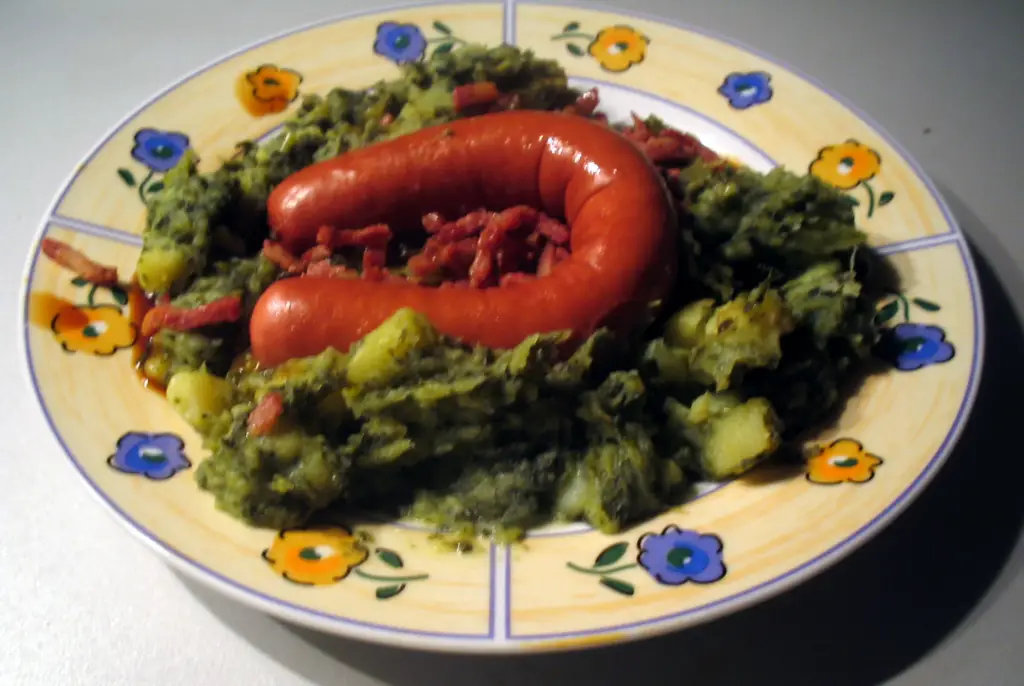
The country’s location in the fertile North Sea River delta of the European Plain shapes Dutch cuisine, known as “Nederlandse keuken” in Dutch. This has given rise to fishing, farming, and overseas trade.
Various factors, including the Burgundian-Habsburg court in the 15th and 16th centuries and the colonial spice trade in the 17th century was an influence. Dutch cuisine has evolved over the centuries, with influences from its colonies, globalization, and a focus on efficiency in food production.
One of the traditional dishes in Dutch cuisine is “Stamppot”.
Stamppot: Stamppot is a traditional Dutch dish and is made from mashed potatoes mixed with one or more vegetables. It’s a hearty dish, especially popular in the colder months.
Dutch Cuisine – Stamppot Ingredients
- Potatoes: Peeled and quartered.
- Vegetables: Commonly used vegetables include kale (for “Boerenkool”), endive, or sauerkraut. But you can also use carrots and onions (for “Hutspot”), or spinach.
- Milk and butter: For mashing the potatoes.
- Salt and pepper: For seasoning.
- Optional: Smoked sausage (rookworst) or bacon bits.
Dutch Cuisine – Stamppot Recipe
- Boil the potatoes in salted water until tender.
- In a separate pot, cook the chosen vegetable(s) until tender.
- Drain the potatoes and mash them with a bit of milk and butter until smooth.
- Mix the mashed potatoes with the cooked vegetables.
- Season with salt and pepper.
- Serve hot, often with a smoked sausage or bacon bits on top.
Stamppot is a versatile dish, and you can experiment with different vegetables according to your preference.
Dutch Cuisine – Erwtensoep (pea soup)

One such dish that stands out in Dutch culinary tradition is Erwtensoep, also known as snert.
Erwtensoep (Pea Soup): Erwtensoep, colloquially known as “snert”, is the Dutch version of pea soup. It’s a thick stew made from green split peas, various cuts of pork, and an assortment of vegetables. This soup is especially popular during the colder months and is emblematic of Dutch cuisine.
Dutch Cuisine – Erwtensoep Ingredients
- Green split peas
- Different cuts of pork (such as bacon or sausage)
- Celeriac or stalk celery
- Onions
- Leeks
- Carrots
- Potatoes (optional)
- Rookworst (smoked sausage)
Dutch cuisine recipes – Erwtensoep
- Preparation: Begin by soaking the green split peas in water for a few hours.
- Cooking the Pork: In a large pot, add the pork cuts along with water and bring to a boil. Reduce the heat and let it simmer.
- Adding Vegetables: Add the celeriac, onions, leeks, carrots, and potatoes (if using) to the pot.
- Simmering: Add the soaked split peas to the pot and let everything simmer until the peas are fully cooked and have a mushy consistency.
- Final Touch: Before serving, slices of rookworst (smoked sausage) are added to the soup.
- Serving: The soup is traditionally served with Frisian rye bread (roggebrood) and bacon, cheese, or butter. The bacon used is usually “katenspek”, a type of bacon that has been cooked and then smoked.
Erwtensoep is a rich and hearty dish, perfect for warming up during the cold Dutch winters. It’s not just a meal but a cultural experience, reminding many Dutch people of home and tradition.
Dutch cuisine recipes – – Kroketten
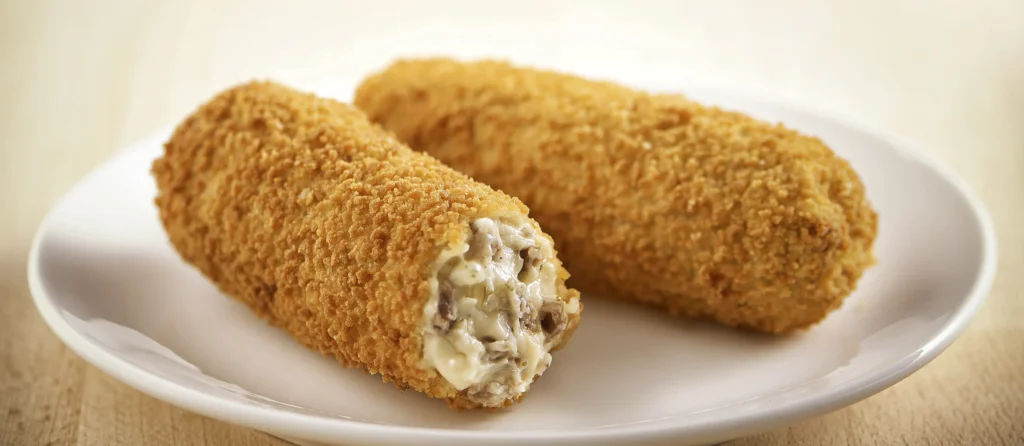
A Kroketten is a deep-fried roll that has its origins in French cuisine. It consists of a thick binder combined with a filling, which is then breaded. This dish is served as a side dish, snack, or fast food worldwide.
The binder can be a thick béchamel or brown sauce, mashed potatoes, wheat flour, or wheat bread. The binder may be mixed with or stuffed with a filling.
Typical fillings include finely chopped meat, seafood, cheese, rice, mushrooms, and various vegetables, which may be combined with seasonings such as herbs and spices. Sweet croquettes may use a pastry cream binder and be filled with fruit.
History of Dutch Cuisine – Kroketten
In the Netherlands, after World War II, croquettes filled with beef became mass-produced and gained popularity as a fast food.
The Dutch version, “kroket,” is made by covering meat ragout with breadcrumbs and then deep-frying it. Due to its success as a fast food, it was often seen as a cheap dish, leading to urban myths about its content.
Research has shown that 350 million kroketten are consumed in the Netherlands annually, making it the second most popular Dutch snack after the frikandel. Variants of the croquette in the Netherlands specify the kind of meat used, such as rundvleeskroket (made with beef) and kalfsvleeskroket (made with veal).
There are also other versions like the satékroket (with peanut satay sauce and shredded meat in a ragout) and the goulash kroket. A smaller round version of the beef or veal croquette, known as the bitterbal, is often served with mustard as a snack in bars and at receptions.
The “broodje kroket,” a croquette on a bread roll, is also a popular dish in the Netherlands, and even McDonald’s offers their version on a bun as “McKroket.”
Dutch cuisine recipes – Kroketten
Beef (For Soup Base)
- For this dish, you’ll need cooked beef. Combine the beef with 4 ½ cups of cold water, an onion, parsley, and bay leaves in a pot. Bring the mixture to a boil.
- Once boiling, reduce the heat and let it simmer for 3 to 4 hours without a lid.
- As it cooks, the water will reduce, leaving you with about 2 ¼ cups of concentrated beef broth.
- (Tip: Always start with cold water to prevent the beef from getting tough).
Beef Broth
- This broth will be used to make a rich ragout.
- If your broth is unsalted, add a teaspoon of salt.
- You can use the broth left over from cooking the beef.
- If you have extra beef from making soup, you can also prepare broth using a bouillon cube.
Breadcrumbs
- Opt for breadcrumbs or finely crushed toasted white bread.
Seasonings
- Black pepper, salt, nutmeg, and thyme will be used to season the ragout. Before combining it with the meat, give the ragout a taste. Always use a fresh spoon for tasting to maintain the consistency of the ragout.
Gelatin
- This is essential for binding the ragout, ensuring it thickens enough to be molded into elongated shapes. Aim for a dense consistency.
Making Dutch Croquettes
Steps:
- Melt butter over medium-high heat and sauté the onion until it’s clear. Add all the flour to form a roux. Cook for at least 2 minutes to avoid a raw flour taste.
- Gradually add the broth to the roux, stirring continuously, and bring to a boil. Turn off the heat and mix in the pre-soaked gelatin.
- Incorporate the seasonings and mix thoroughly. Adjust seasoning if needed.
- Mix the meat into the broth. You can shred the beef using two forks or finely dice it.
- Spread the meat mixture on a large plate and cover with plastic wrap to prevent a skin from forming. Allow it to cool until the ragout is firm enough to shape.
- Wet your hands and shape the mixture into small rolls, about 4 inches long and 1 inch thick. Coat the rolls first in breadcrumbs, then in flour, egg white, and finally in breadcrumbs again for a double coating. Deep-fry the croquettes at 350°F until they’re golden brown, which should take about 4 minutes.
- Remove from the oil and let them drain on paper towels to remove excess oil before serving.
Serving Suggestions
- Pair these croquettes with sides like French fries, Dutch cheese soufflé, Frikandel, chicken satay, Dutch mayo, ketchup, or curry sauce.
- For a delightful lunch, serve these crispy treats in soft white or hamburger buns with a dollop of mustard.
Dutch Cuisine Recipes – Haring (herring)
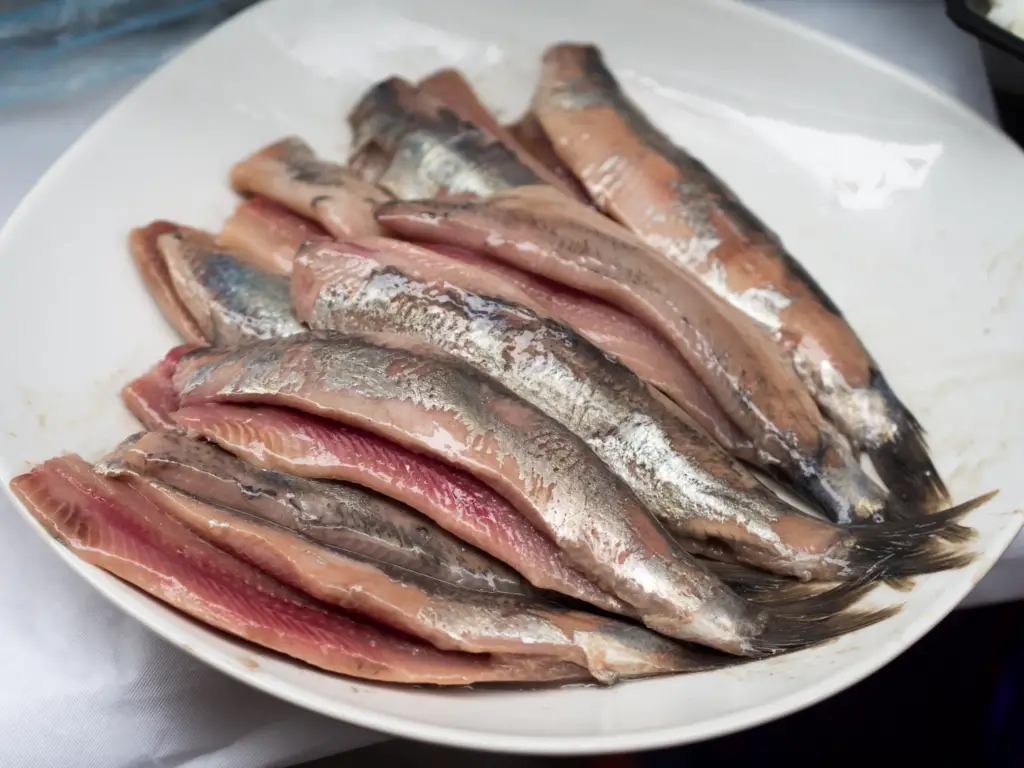
Herring has been a staple in the Dutch diet for centuries. The Dutch have a particular way of preparing raw herring, which is often eaten with onions and pickles. This dish, known as “Hollandse Nieuwe” or “Maatjesharing,” is traditionally consumed by holding the herring by its tail and taking a bite. The fish is cleaned, with the head removed, and then salt-cured for a few days, giving it its unique flavor. This method of preparation and consumption has made herring an iconic Dutch delicacy, celebrated annually during “Vlaggetjesdag” (Flag Day).
Recipe for Dutch Haring (Herring)
Unfortunately, the specific recipe for Dutch Haring (herring) was not provided in the content extracted. However, traditionally, Dutch herring is enjoyed in the following manner:
Dutch Cuisine – Haring (herring) Ingredients
- Fresh herring fish
- Salt (for curing)
- Onions (finely chopped)
- Pickles (optional)
Haring (herring) Preparation
- Clean the herring by removing the head and innards. Leave the tail intact.
- Salt-cure the herring for a few days. This process involves covering the herring in salt to preserve and flavor it.
- Once cured, the herring is ready to be consumed.
- Serve the herring with finely chopped onions. Some people also like to add pickles.
Dutch cuisine recipes – Haring (herring) Consumption
- Hold the herring by its tail.
- Tilt your head back and take a bite from the fish.
- Enjoy the rich, salty flavor complemented by the sharpness of the onions.
This traditional Dutch dish is a testament to the Netherlands’ rich maritime history and its longstanding relationship with the sea. The simplicity of the dish, combined with its unique taste, makes it a favorite among both locals and tourists.
Would you like more information or recipes related to Dutch cuisine or any other specific dish?
Dutch Cuisine Recipes – Kibbeling

Kibbeling is a popular Dutch snack made from pieces of battered and deep-fried fish, typically cod. It’s often served with various sauces, most commonly a tangy “ravigotte” sauce. Kibbeling is reminiscent of the British fish and chips but is usually made from bite-sized pieces rather than whole fillets. It’s a favorite at Dutch fish markets and is enjoyed by locals and tourists alike.
Dutch Cuisine Recipes – for Dutch Kibbeling
Dutch Cuisine – Kibbeling Ingredients
- Cod (preferably fresh) – cut into bite-sized pieces.
- Neutral cooking oil (for deep frying).
- Egg yolk.
- Flour.
- Dark beer.
- Fish seasoning (can be a mix of salt, pepper, paprika, and other preferred spices).
- Ravigotte sauce (for serving).
Kibbeling Preparation
- Heat the neutral cooking oil in a Dutch oven or another deep frying pan.
- Prepare the batter by whisking together the egg yolk, flour, and dark beer. Add half of the fish seasoning to this mixture and set it aside.
- Season the cod pieces with the remaining fish seasoning.
- Once the oil is hot, dip each piece of cod into the batter, ensuring it’s fully coated.
- Carefully drop the battered cod pieces into the hot oil. Fry in batches to avoid overcrowding the pan.
- Fry until the pieces turn a golden-brown color.
- Remove the fried cod pieces and place them on a plate lined with paper towels to absorb any excess oil.
- Serve the kibbeling hot with ravigotte sauce on the side.
Dutch Cuisine – Kibbeling Serving Suggestion
Kibbeling is best enjoyed fresh and hot. The tangy ravigotte sauce complements the crispy, fried fish perfectly. It’s a delightful snack that captures the essence of Dutch culinary traditions.
For a more detailed recipe and variations, you can view the original recipe here.
Dutch Cuisine Recipes – Bitterballen
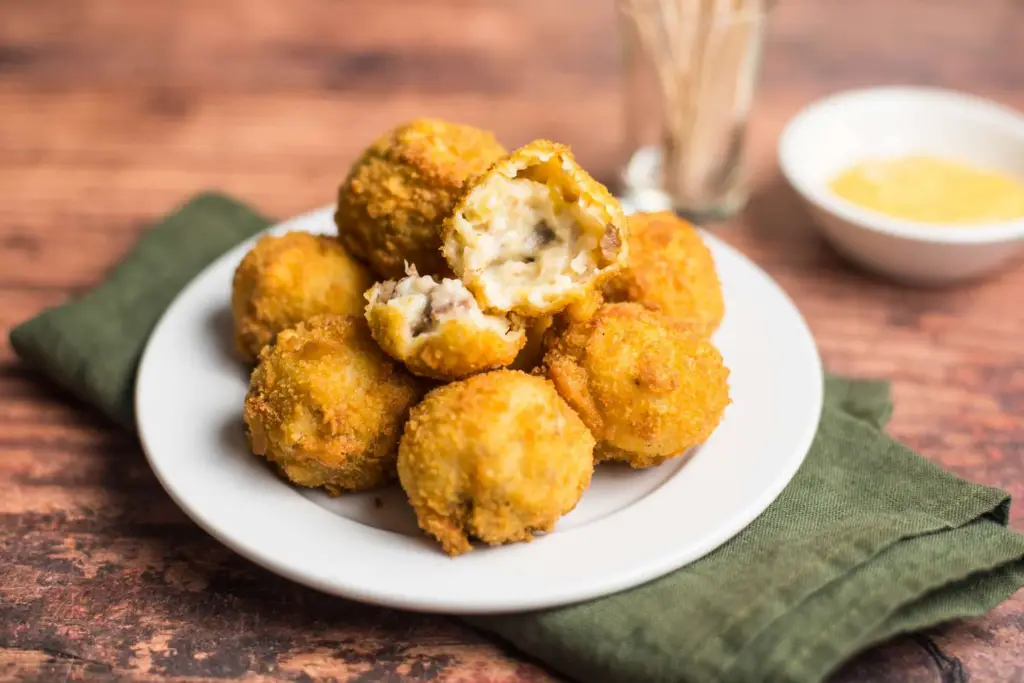
Bitterballen are a classic Dutch bar snack and are among Holland’s most beloved treats. These bite-sized beef and gravy croquettes are usually paired with beer and are a staple in Dutch pubs and gatherings. Unlike the typical meatball, Bitterballen have a crispy exterior and a soft, gooey interior, making them a unique and delightful snack. They are often served with grainy or spicy mustard, enhancing their rich flavor.
Dutch Cuisine Recipes – Bitterballen Ingredients
For Bitterballen
- 8 tablespoons unsalted butter (1 stick)
- 1 cup all-purpose flour
- 3 cups beef broth
- 2 tablespoons fresh parsley (chopped)
- 1 small onion (minced)
- 1 pound ground beef
- ½ teaspoon salt
- 1 teaspoon black pepper
- ¼ teaspoon nutmeg
For Breading:
- All-purpose flour (for coating)
- 3 large eggs (beaten)
- Panko bread crumbs (for coating)
- Vegetable oil (for frying)
Dutch Cuisine Recipes – Bitterballen Preparation
- Create the Roux: In a large skillet, melt the butter over medium-high heat. Once melted, gradually add the flour, whisking continuously to form a thick paste.
- Cook the Gravy: Slowly whisk in the beef broth to the roux until fully incorporated. The gravy should be smooth but thick. Simmer for a couple of minutes.
- Add Ingredients: Stir in the parsley, onion, and ground beef. Season with salt, pepper, and nutmeg. Mix well.
- Refrigerate: Transfer the meat mixture to a container and refrigerate for several hours until the gravy solidifies. Overnight refrigeration is ideal, but 3-4 hours should be sufficient.
- Shape the Bitterballen: Once the mixture is solidified, shape it into 1-inch balls. Using a small ice cream scoop can help ensure uniformity.
- Bread the Bitterballen: Roll each meatball first in flour, then dip in the beaten eggs, and finally coat with panko bread crumbs.
- Fry: In a large Dutch oven or deep fryer, heat about 2 inches of vegetable oil to 375°F (190°C). Fry the meatballs in batches until they are golden brown, which should take about 4-5 minutes. Ensure the meatballs float to the top when done.
- Serve: Serve the Bitterballen hot, accompanied by grainy or spicy mustard.
Tips
- Panko breadcrumbs are recommended for a crispier exterior. For a finer texture, pulse them in a food processor a few times.
- For a vegetarian version, consider using finely chopped mushrooms as a substitute for meat.
- Bitterballen pairs wonderfully with beer and other finger foods.
Enjoy this traditional Dutch snack that perfectly encapsulates the flavors and textures of Dutch culinary delights!
Dutch Cuisine Recipes – Poffertjes
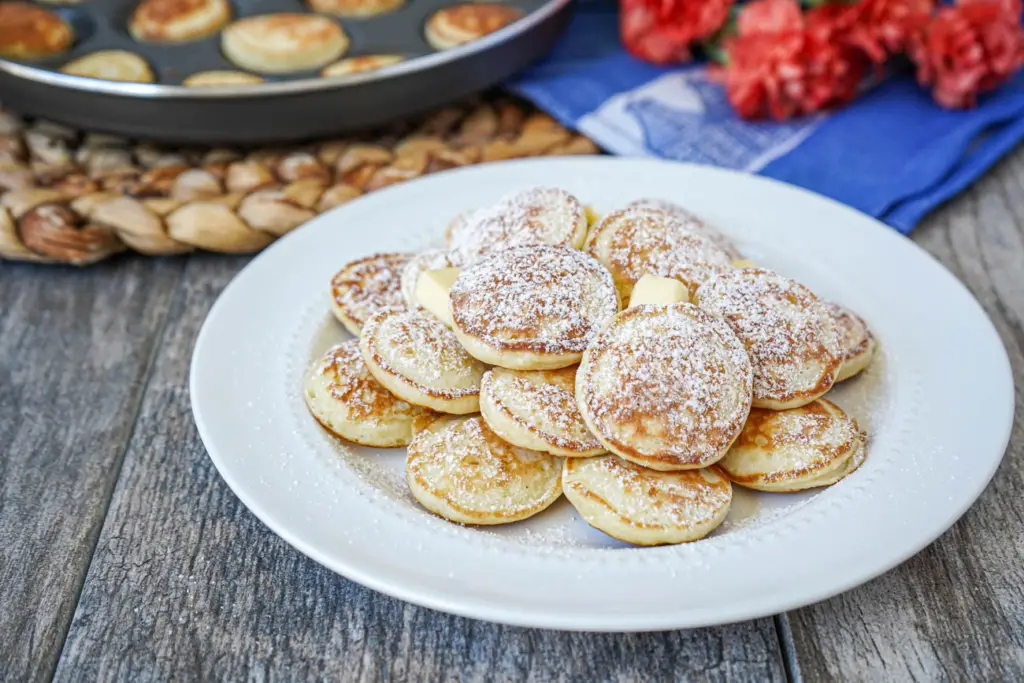
Poffertjes are traditional Dutch mini pancakes that are a popular treat in the Netherlands. These fluffy, bite-sized pancakes are typically served with a dusting of powdered sugar and a dollop of butter. They are often enjoyed as a breakfast item, snack, or dessert. Poffertjes have a rich history in Dutch cuisine and are a must-try for anyone visiting the country.
They are commonly found at street food stalls, especially in markets in Amsterdam, such as the renowned Albert Cuyp Market. Interestingly, Poffertjes also have a presence in some parts of Indonesia due to historical ties with Dutch heritage, where they are known as “Kue Cubit.”
Dutch Cuisine Recipes – Poffertjes Ingredients
- 1 1/2 cups milk (375ml / 12.68floz) – very warm but not hot
- 2 1/2 tsp instant yeast (7g) – slightly heaped
- 2 cups plain flour / all-purpose flour (280g / 9.87oz) – can substitute with buckwheat flour or use half and half
- 1 egg
- ¼ cup sugar
- 2 tbsp butter (25g) – softened or melted, for greasing the pan
- 1/2 tbsp icing sugar / powdered sugar – for dusting
Dutch Cuisine Recipes – Poffertjes Preparation
- In a large mixing bowl, combine the flour, sugar, and yeast. Make a well in the center.
- Pour the warmed milk and egg into the well and whisk to form a smooth batter.
- Cover the bowl with a tea towel or silicone bowl cover and let it rise for about an hour. The batter should double in size and appear bubbly.
- Heat a poffertjes pan or regular frying pan and grease it with butter.
- Once the pan is warm, spoon heaped tablespoons of the batter into each well of the poffertjes pan. If using a regular frying pan, ensure you leave space between each dollop of batter.
- After about 1-2 minutes, when bubbles start to appear on the surface, flip the poffertjes using a chopstick or skewer.
- Cook for another 1-2 minutes until they puff up.
- Remove from the pan and repeat with the remaining batter.
- Serve the poffertjes hot, dusted with powdered sugar.
- Ensure the milk is warm but not boiling hot, as very hot milk can kill the yeast.
- You can store Poffertjes in an airtight container in the fridge for up to a week. You can also freeze them for up to two months.
- For a vegan version, replace the egg with 1/4 cup of mashed banana, applesauce, or vegetable oil, and use almond or oat milk in place of regular milk.
Enjoy these delightful Dutch mini pancakes with a sprinkle of sugar and a pat of butter!
Dutch Cuisine Recipes – Stroopwafels

Stroopwafels, which translates to “syrup waffles,” are a beloved Dutch treat. These thin, round waffle cookies are filled with a rich caramel-like syrup, making them irresistibly sweet and chewy. Originating from the city of Gouda in the Netherlands, stroopwafels have been enjoyed by the Dutch since the 18th century. Today, they are popular not only in the Netherlands but also around the world. Whether enjoyed with a cup of coffee, tea, or on their own, stroopwafels are a delightful treat that embodies Dutch culinary tradition.
Dutch Cuisine – Stroopwafels Ingredients
- 1 cup (250 grams) all-purpose flour
- 1 1/2 teaspoons instant yeast
- 2 tablespoons granulated sugar
- 1/4 teaspoon salt
- 3 1/3 tablespoons tepid milk
- 1/2 cup (100 grams) best-quality unsalted butter, melted
- 1 large egg, lightly beaten
- 1 cup (200 grams) pure cane sugar
Dutch Cuisine Recipes – Stroopwafels Preparation
- In a large mixing bowl, combine the flour, yeast, granulated sugar, and salt.
- Add the milk, melted butter, and beaten egg to the dry ingredients. Mix until a soft dough forms.
- Allow the dough to rise in a warm, draft-free area until it has almost doubled in size. This may take longer due to the enriched nature of the dough.
- On a clean surface, divide the dough into 16 equal portions. Roll each portion in the pure cane sugar, ensuring each piece is well-coated.
- Roll each sugared dough piece into a long, thin tube, approximately 12 inches (30 cm) in length.
- Twist the tubes into pretzel shapes, tucking the ends underneath.
- Place the pretzels on a greased baking sheet, allowing them to rise until they’ve doubled in size.
- Preheat the oven to 390°F (200°C).
- Bake the pretzels for 10-15 minutes or until they turn golden brown. Keep a close eye on them to prevent burning.
- Remove from the oven and let them cool on a wire rack.
Serving: Enjoy the stroopwafels while they’re still warm, or store them in an airtight container for up to a week.
Stroopwafels Preparation Tips
- If you can’t find pure cane sugar, you can substitute it with brown sugar or demerara sugar.
- The sugared pretzels will remain fresh for almost a week when stored in an airtight container.
Dutch Cuisine Recipes – Hutspot

Hutspot is a traditional Dutch dish that has been a staple in Dutch cuisine for centuries. It is a hearty and comforting dish made from mashed potatoes, carrots, and onions. The name “Hutspot” translates to “hotchpotch” in English, which aptly describes the dish’s mixed ingredients.
It is often enjoyed during the colder months and is a favorite during celebrations and family gatherings. Hutspot can be served with various accompaniments, but it is commonly paired with smoked sausage and mustard or piccalilli.
Dutch Cuisine – Hutspot Ingredients
- Potatoes – chopped into chunks
- Carrots – peeled and chopped into chunks
- Onions – coarsely chopped
- Bay leaves
- Ground nutmeg
- Butter
- Milk
- Salt and pepper for seasoning
Dutch Cuisine Recipes – Hutspot Preparation
- Start by peeling the potatoes and chopping them into chunks.
- In a large pan, add the potatoes along with water and salt. Bring the mixture to a boil.
- While the potatoes are boiling, peel the carrots and chop them into chunks.
- Add the carrots to the boiling water along with the bay leaves.
- Peel the onions and coarsely chop them. Add the chopped onions to the pan.
- Continue cooking until the potatoes are fully cooked.
- Once done, remove the bay leaves from the pan.
- Use a potato masher to mash the potatoes, carrots, and onions together.
- Season the mixture with ground nutmeg, pepper, and salt.
- Add butter and milk to the mixture and continue mashing until you achieve a smooth consistency.
- Serve the hutspot while it’s hot. It pairs perfectly with smoked sausage and mustard or piccalilli.
Serving Suggestion
Hutspot is best enjoyed warm, with its rich flavors and creamy texture making it a comforting dish. The addition of smoked sausage adds a savory touch, while mustard or piccalilli provides a tangy contrast.
For a more detailed recipe and variations, you can view the original recipe here.
Dutch Cuisine Recipes – Dutch Apple Pie (Appeltaart)

History and Background of Dutch Apple Pie (Appeltaart)
Dutch apple pie, known as “Appeltaart,” has a storied place in the Netherlands’ culinary history, dating back to the Middle Ages. The pie’s evolution is closely tied to the country’s trade history, particularly the spice trade, which introduced cinnamon and nutmeg to Dutch kitchens.
These spices became key ingredients in the appeltaart, setting it apart from other variations. The Dutch appeltaart is distinct for its deep dish, lattice crust, and the use of tart apples, which are abundant in the Netherlands.
It’s a staple in Dutch cafés and a symbol of home comfort, often served with a dollop of whipped cream or a scoop of ice cream.
List of Ingredients for Dutch Apple Pie (Appeltaart)
For the Dough
- 2 1/2 cups all-purpose flour
- 3/4 cup granulated sugar
- 1/2 teaspoon salt
- 1 cup unsalted butter, cold and cubed
- 1 large egg
- 2 tablespoons cold water
For the Filling:
- 6 large tart apples (like Granny Smith), peeled, cored, and sliced
- 3/4 cup granulated sugar
- 2 teaspoons ground cinnamon
- 1/4 teaspoon ground nutmeg
- 1 tablespoon all-purpose flour
- Juice of half a lemon
- 1/2 cup raisins (optional)
- 1/4 cup chopped walnuts or almonds (optional)
Assembly and Topping
- 1 egg, beaten (for egg wash)
- 2 tablespoons coarse sugar (for sprinkling on top)
Dutch Cuisine Recipes – Dutch Apple Pie (Appeltaart)
Prepare the Dough
- In a large bowl, mix the flour, sugar, and salt. Cut in the cold butter until the mixture resembles coarse crumbs.
- Add the egg and cold water, and mix until the dough comes together.
- Wrap the dough in plastic wrap and chill in the refrigerator for at least 30 minutes.
Make the Filling
- In a large bowl, combine the sliced apples with sugar, cinnamon, nutmeg, flour, and lemon juice. Mix well to coat the apples evenly. Stir in raisins and nuts if using.
Preheat Oven and Prepare Pie Dish
- Preheat the oven to 375°F (190°C).
- Grease a 9-inch springform pan.
Assemble the Pie
- Roll out two-thirds of the dough on a floured surface to fit the bottom and sides of the pan.
- Pour the apple mixture into the crust.
- Roll out the remaining dough and cut into strips to create a lattice over the filling.
- Brush the lattice with the beaten egg and sprinkle with coarse sugar.
Bake the Pie
- Bake for 50-60 minutes or until the crust is golden brown and the apples are tender.
- If the edges brown too quickly, cover them with foil.
Cool and Serve
- Allow the pie to cool before removing it from the springform pan.
- Serve warm or at room temperature, optionally with whipped cream or ice cream.
Dutch apple pie is a celebration of the Netherlands’ culinary heritage, with its spiced apple filling and buttery crust offering a slice of Dutch comfort in every bite.
These popular Dutch recipes are just the beginning of your culinary journey through the Netherlands. So why not bring a taste of Dutch cuisine into your own kitchen?
Conclusion
As we come to the end of our journey through Dutch cuisine, I hope you have gained a deeper appreciation for the unique flavors and traditions that make up this rich culinary heritage. From the hearty and comforting stamppot to the sweet and indulgent stroopwafels, Dutch cuisine offers a range of dishes that are sure to satisfy any palate.
Whether you are a seasoned chef or a curious foodie, the world of Dutch cuisine is full of exciting recipes and cooking techniques to discover. As you explore this vibrant food culture, remember to embrace the authenticity and cultural significance of each dish.
So, don your apron, head to the kitchen, and let the flavors of Dutch cuisine transport you to the streets of Amsterdam and beyond. With Dutch recipes and techniques at your fingertips, the possibilities for culinary exploration are endless. Happy cooking!
FAQ’s
What is Netherland cuisine known for?
Dutch cuisine is known for its hearty and comforting dishes, such as stamppot (a mashed potato and vegetable dish) and herring. The Netherlands is also famous for its cheeses, including Gouda and Edam.
What are some popular Dutch recipes?
Some popular Dutch recipes include Dutch pancakes (poffertjes), stroopwafels (caramel-filled waffles), and bitterballen (deep-fried meatballs). locals and visitors alike enjoy these recipes.
What is the Netherlands National Dish?
The Netherlands’ national dish is haring and broodje haring, a traditional and popular Dutch delicacy. Haring, or raw herring, is typically served with onions and pickles, while broodje haring is a sandwich made with haring fillets and other ingredients.
This dish is cherished by locals and tourists alike, reflecting the country’s rich culinary heritage.
How does Dutch food culture influence the cuisine?
The country’s geography, history, and agricultural traditions influences Dutch food culture. The emphasis on using fresh and locally sourced ingredients and the love for hearty meals are key aspects of Dutch culinary traditions.
What are some traditional Dutch dishes?
Traditional Dutch dishes include erwtensoep (pea soup), hutspot (a dish made with mashed potatoes, carrots, and onions), and hachee (a beef and onion stew). These dishes have a long history and are part of the country’s culinary heritage.
What are some unique Dutch food specialties?
Some unique Dutch food specialties include hagelslag (chocolate sprinkles on bread), drop (licorice candy), and ontbijtkoek (a spiced gingerbread-like cake). These specialties provide a taste of the Netherlands’ culinary uniqueness.
How can I embrace authentic Dutch cuisine?
Embracing authentic Dutch cuisine involves using quality ingredients, exploring regional specialties, and learning traditional cooking methods. By understanding the cultural influences and connection between food and Dutch identity, you can fully immerse yourself in the authentic flavors of Dutch cuisine.
What cooking techniques are commonly used in Dutch cuisine?
Dutch cuisine utilizes a range of cooking techniques, including braising, stewing, baking, and frying. These techniques help enhance the flavors and textures of the dishes while preserving the natural taste of the ingredients.
What is the legacy of Dutch cuisine?
The legacy of Dutch cuisine is tied to the country’s history and cultural heritage. It reflects the influence of exploration, trade, and colonialism on ingredients and spices. Dutch cuisine tells a fascinating story of blending culinary traditions and the evolution of flavors over time.
What is the Dutch National Dish
The Dutch national dish is stamppot, a hearty and flavorful meal made with mashed potatoes and a variety of vegetables. It is often served with sausages and gravy and is a staple in Dutch cuisine.

